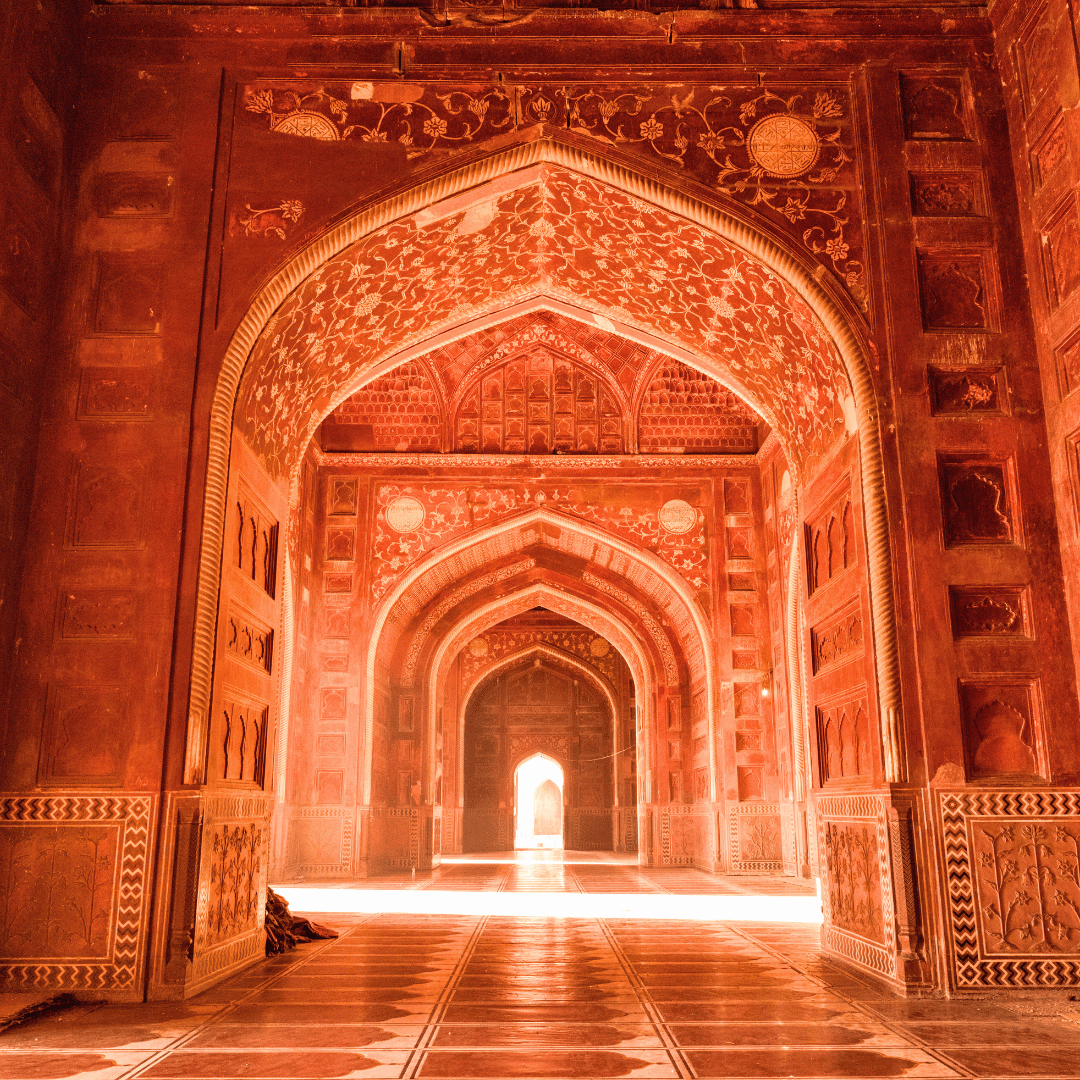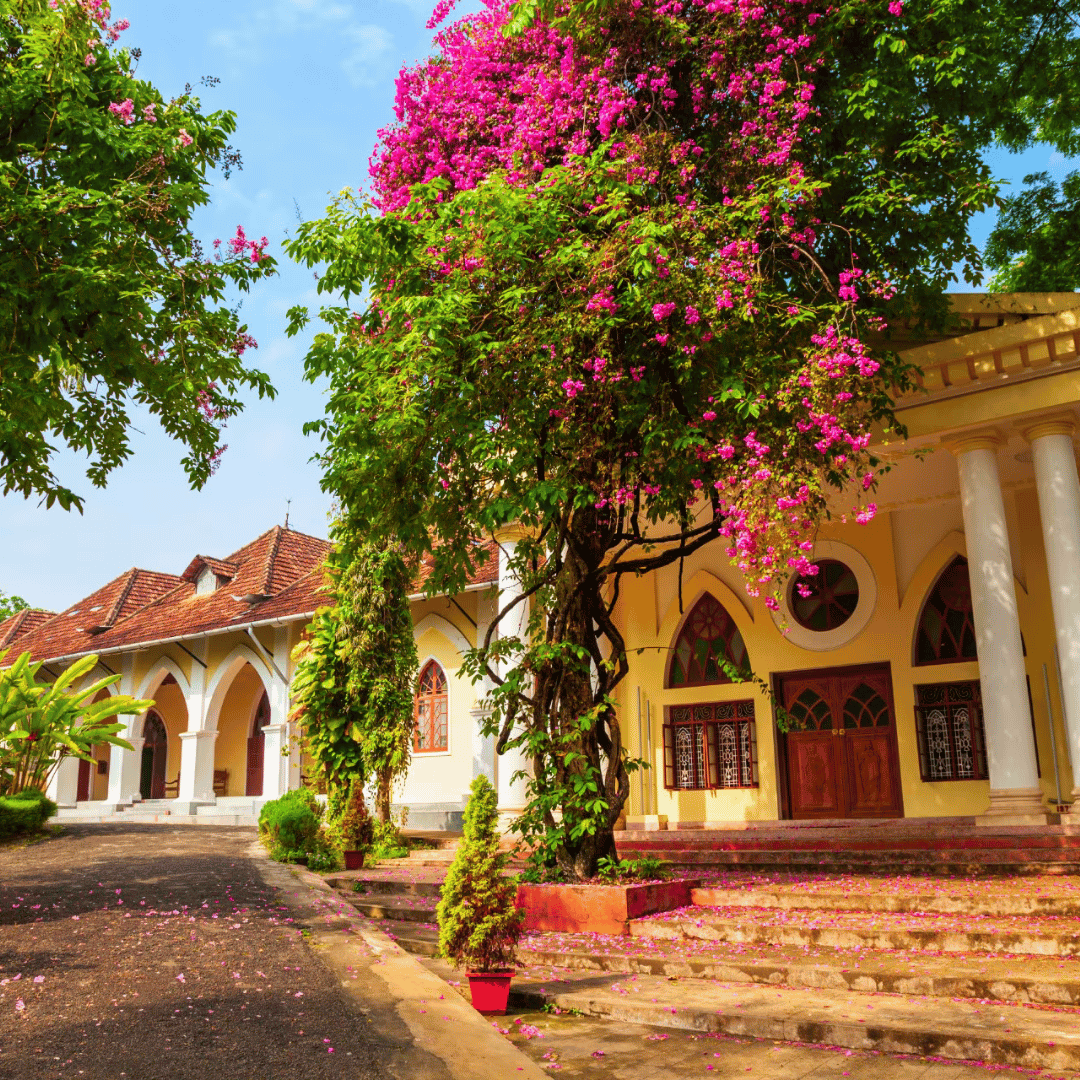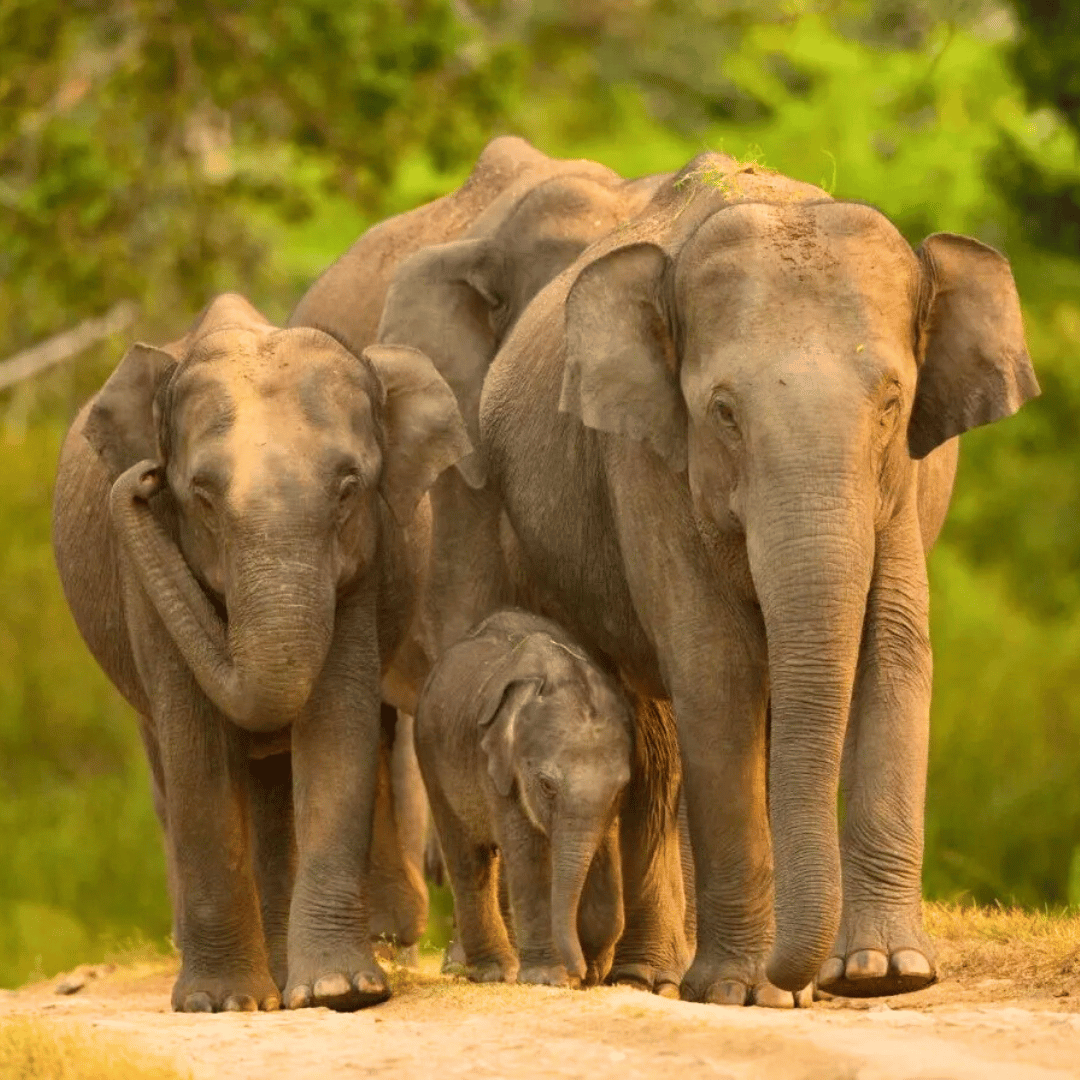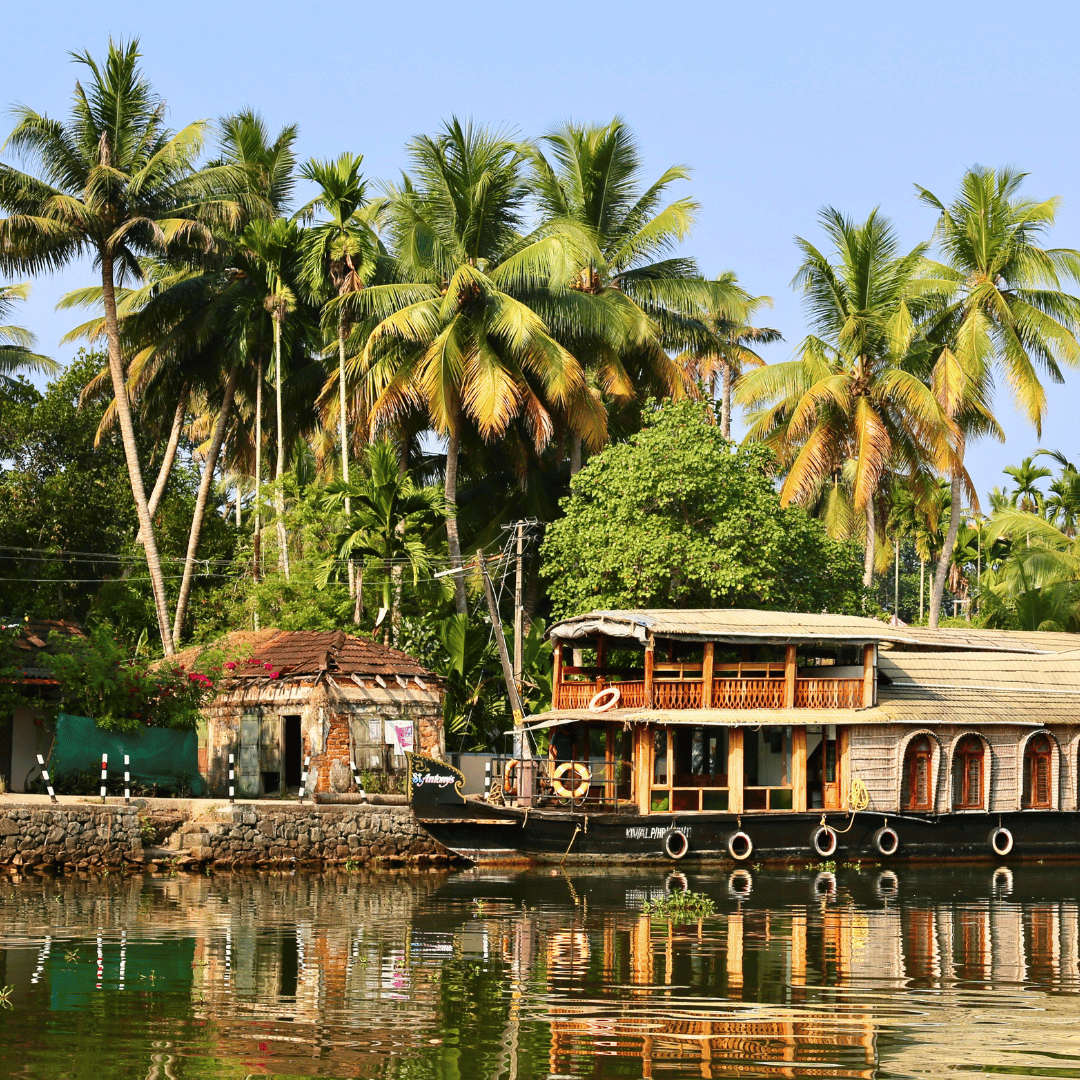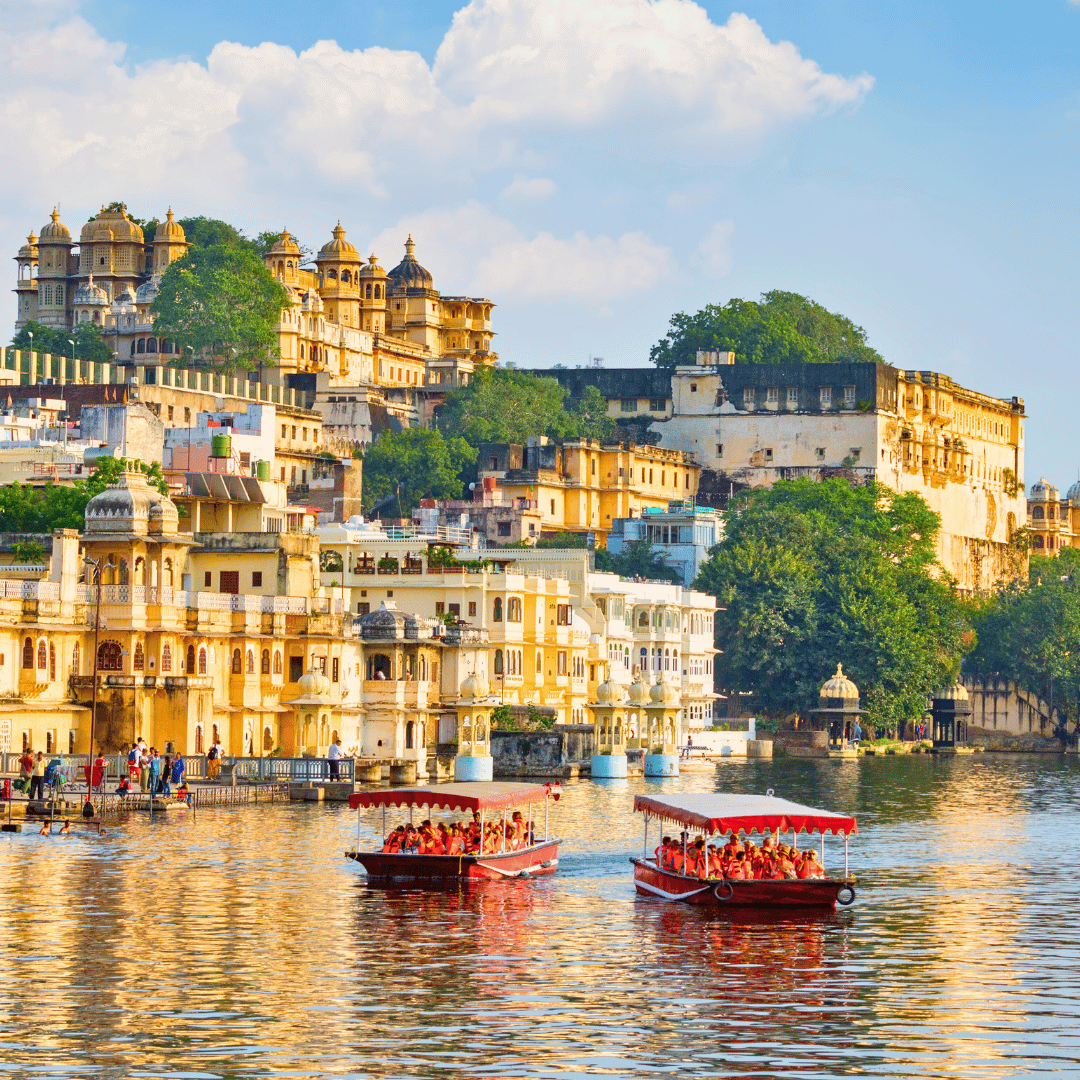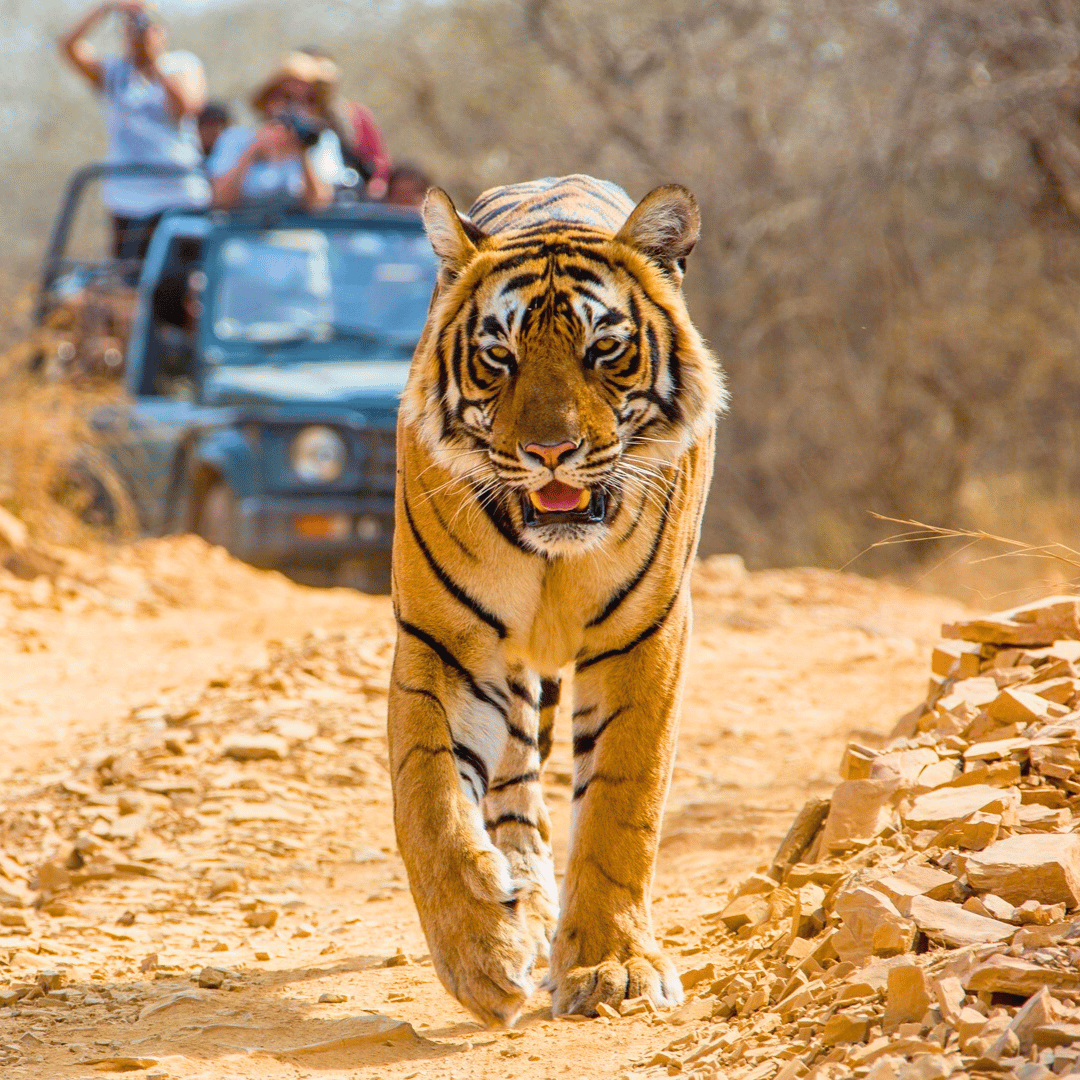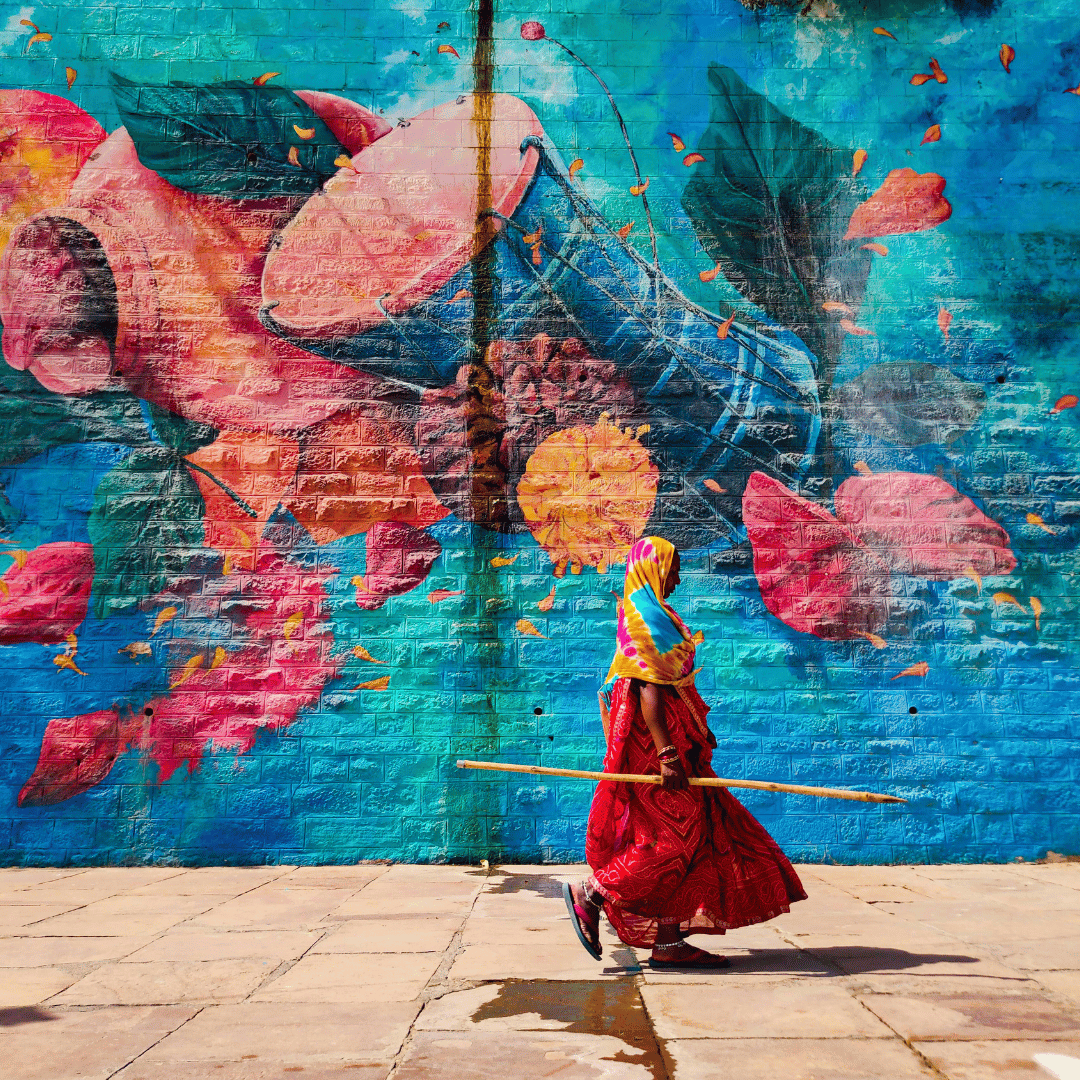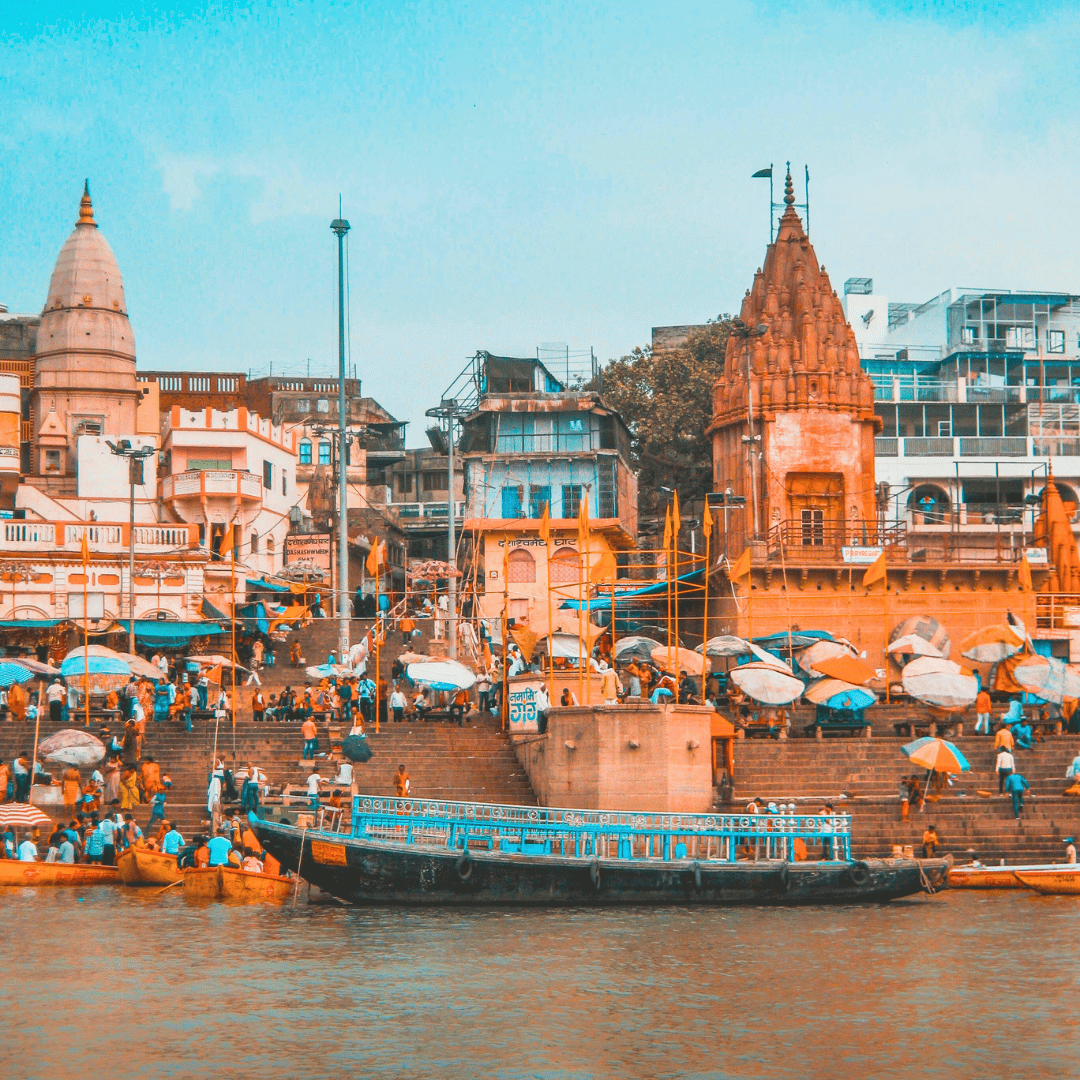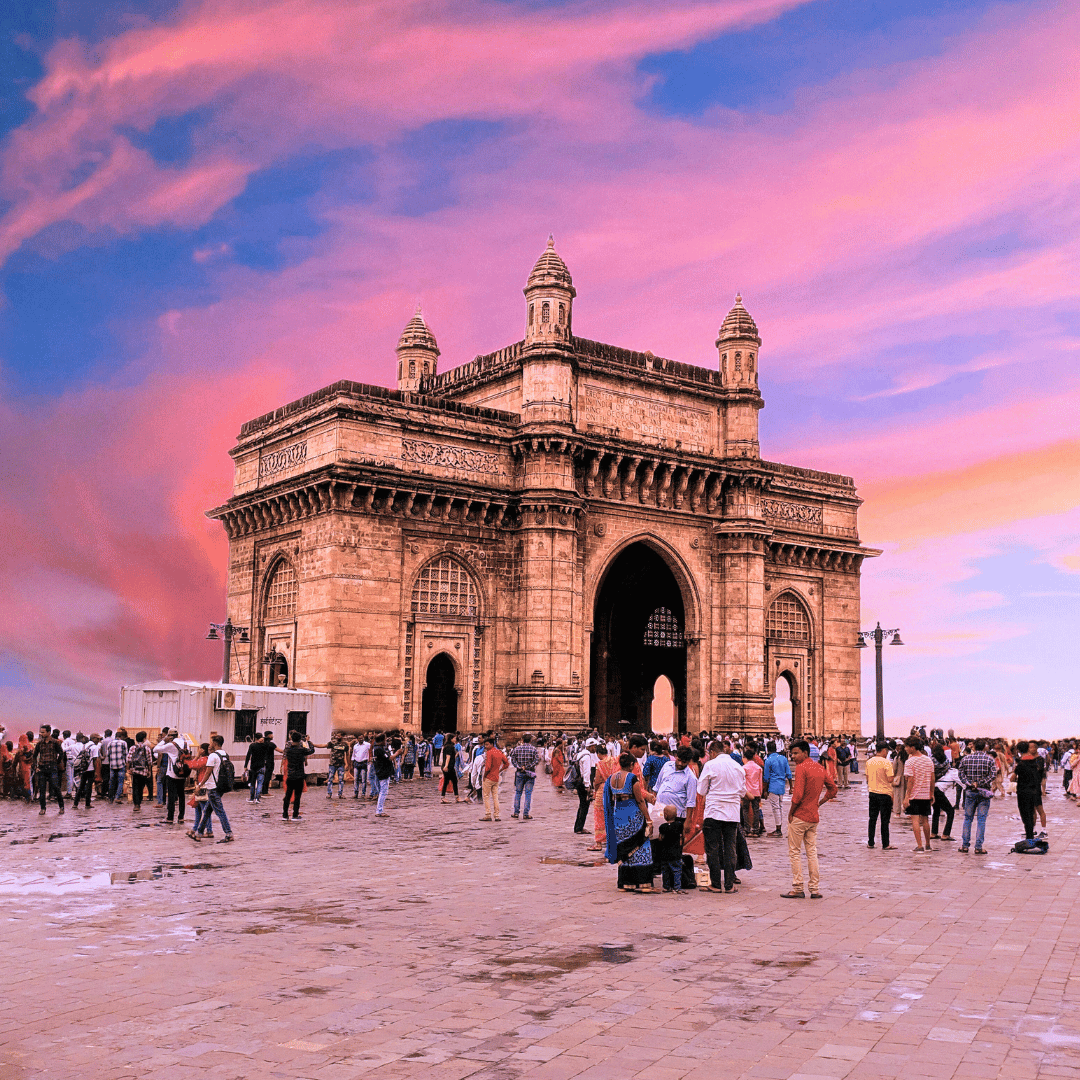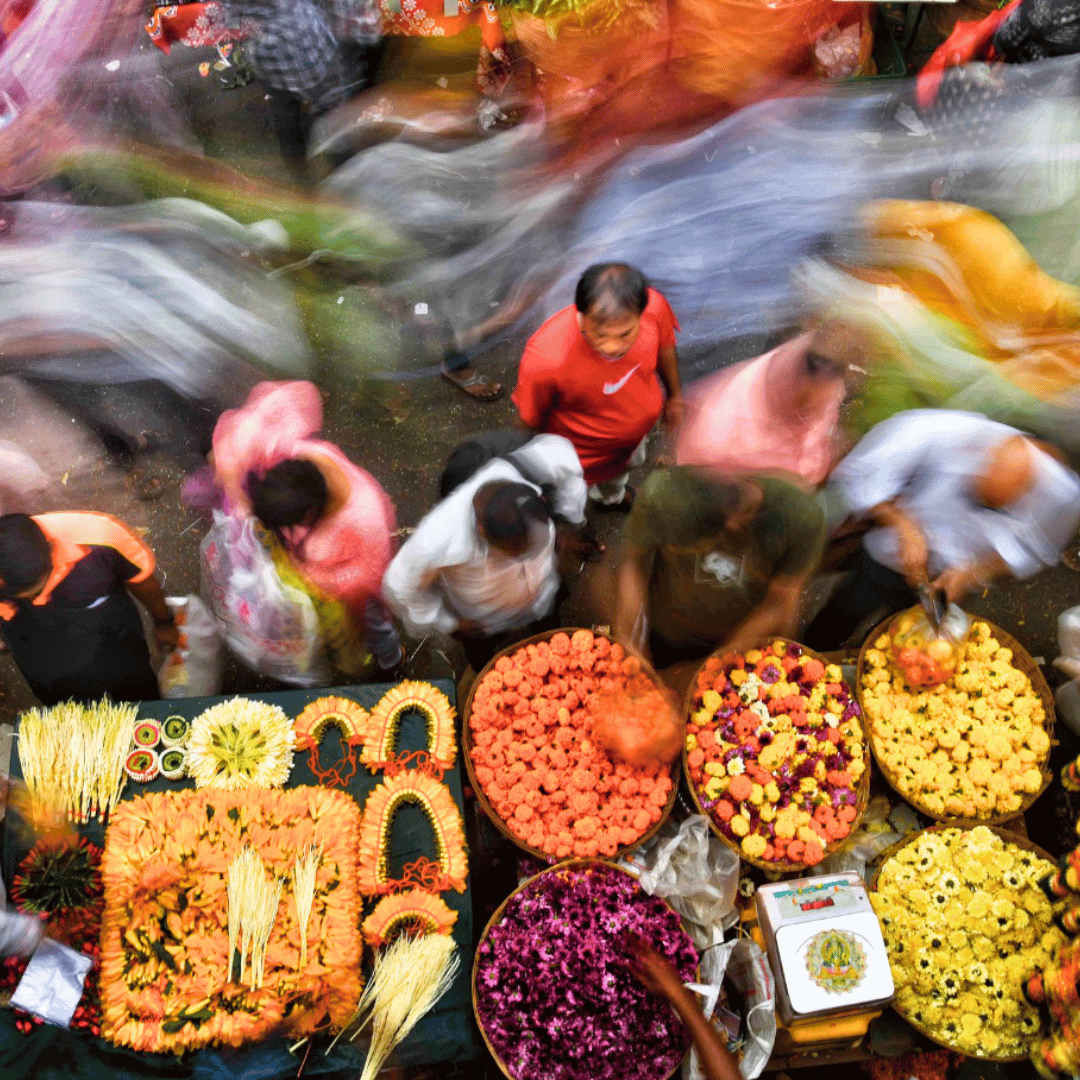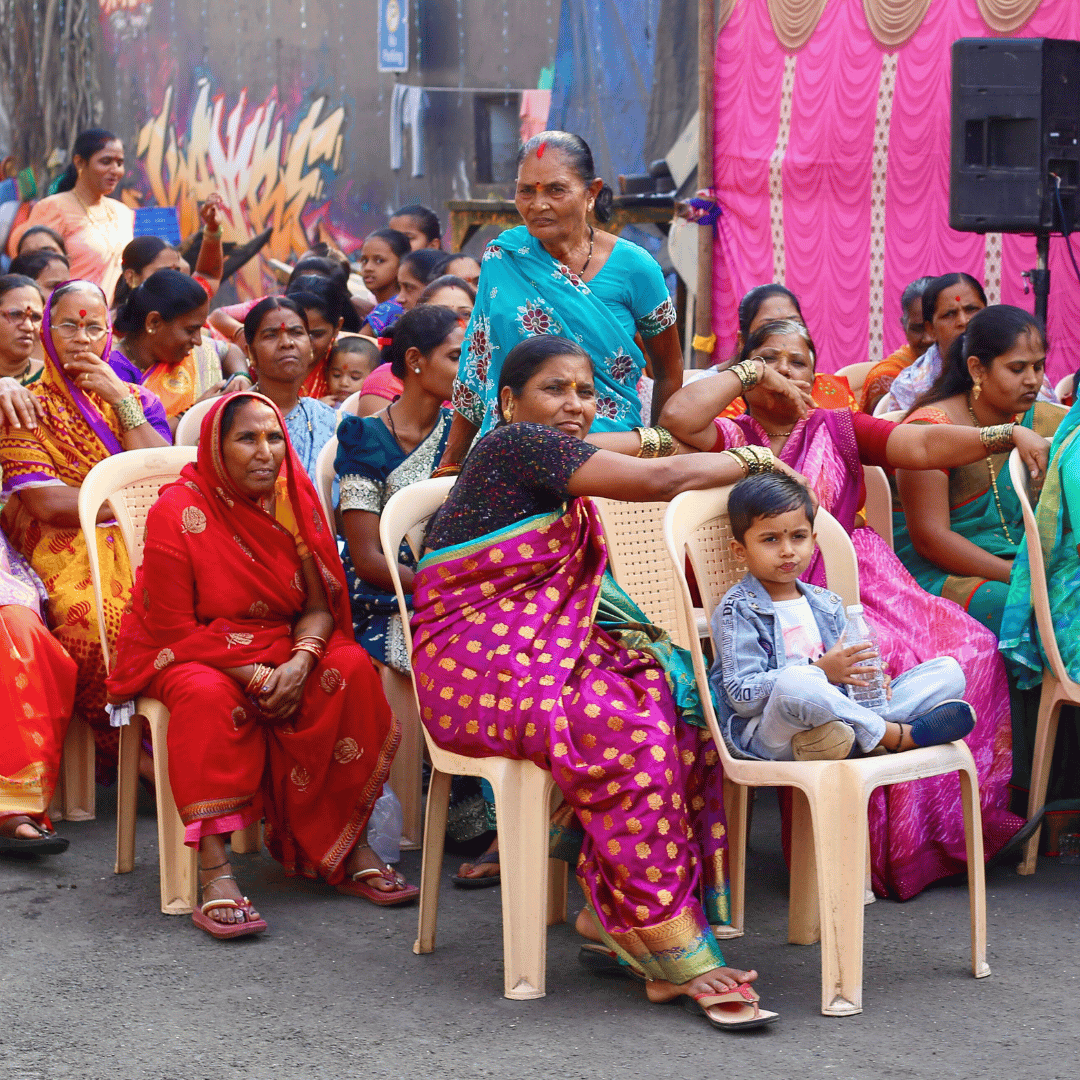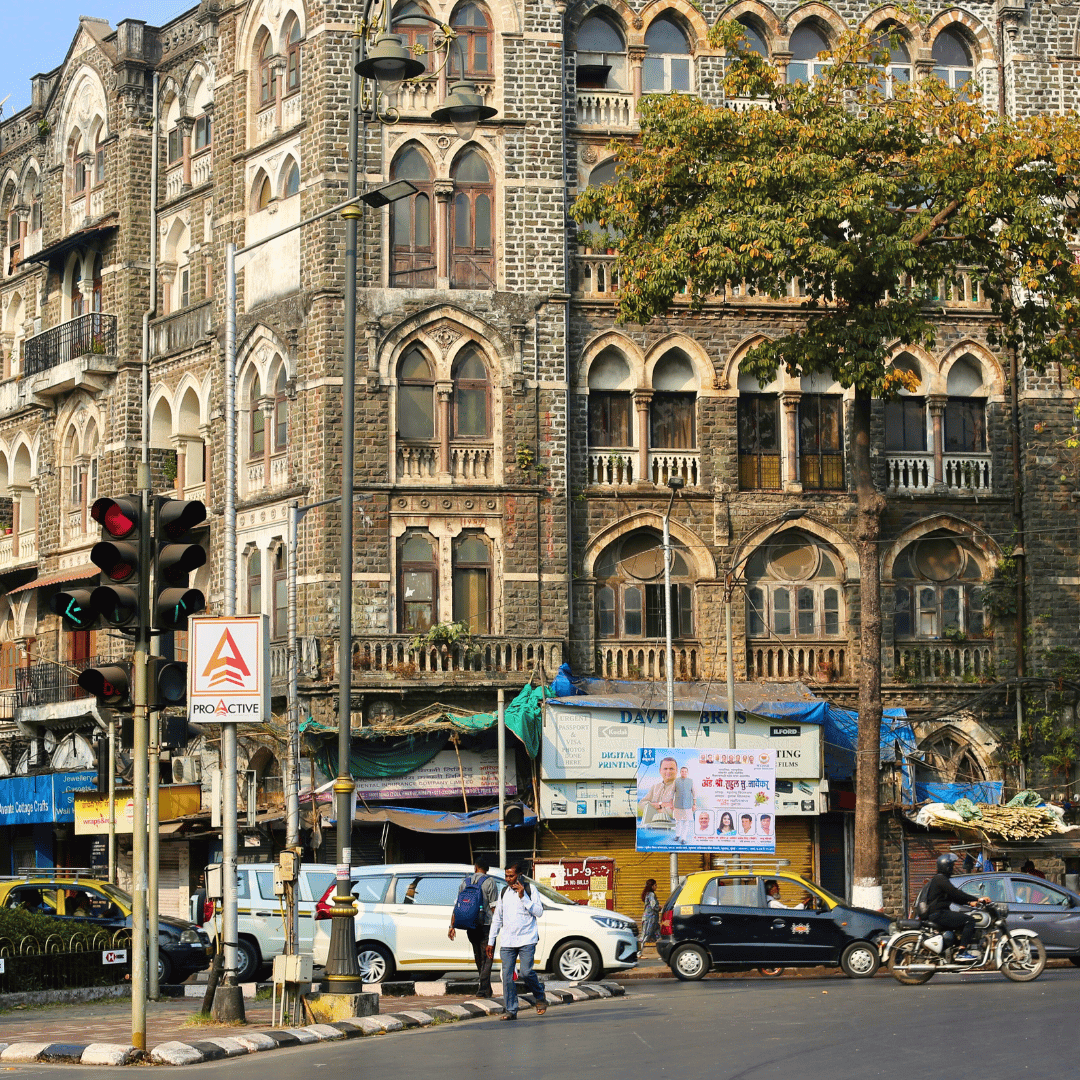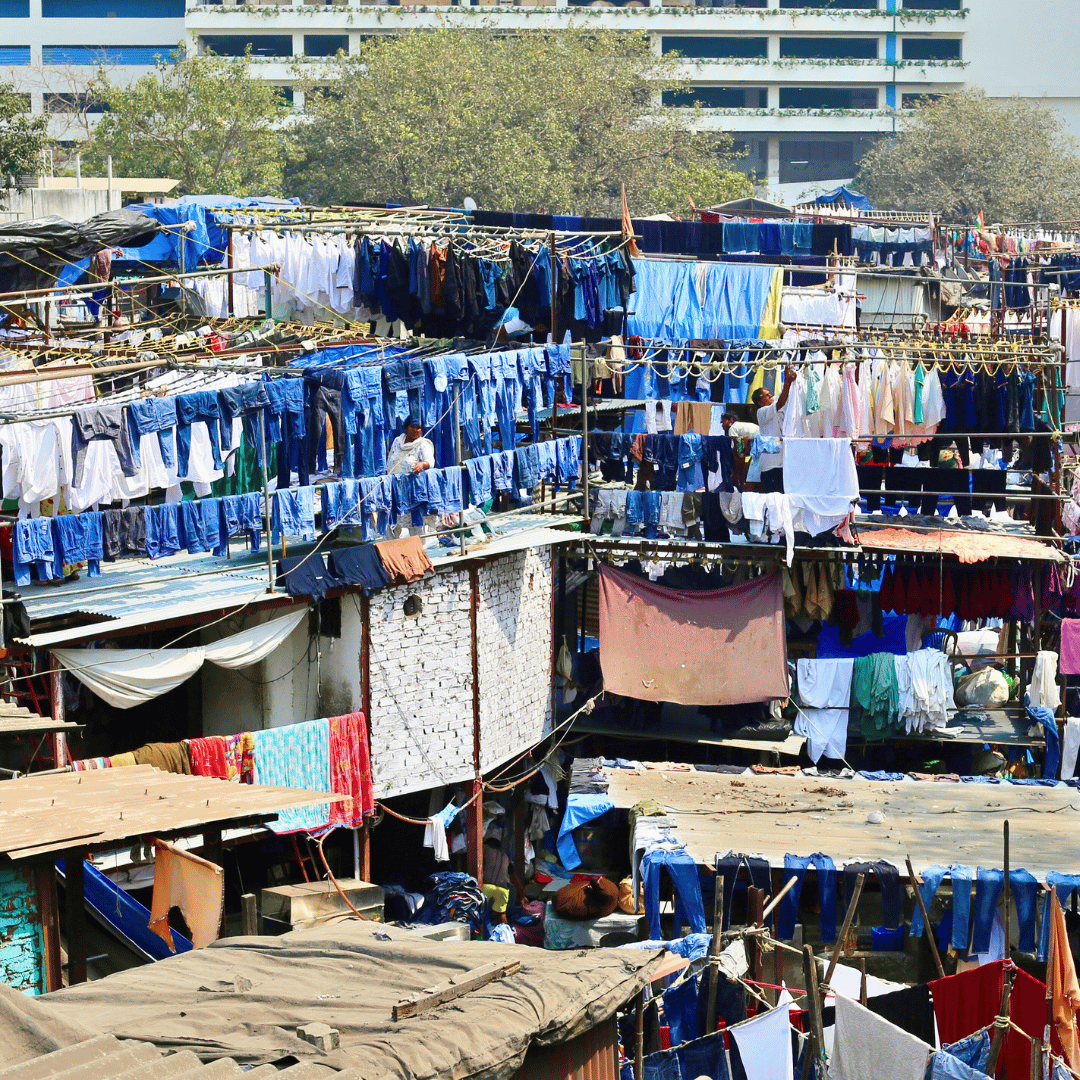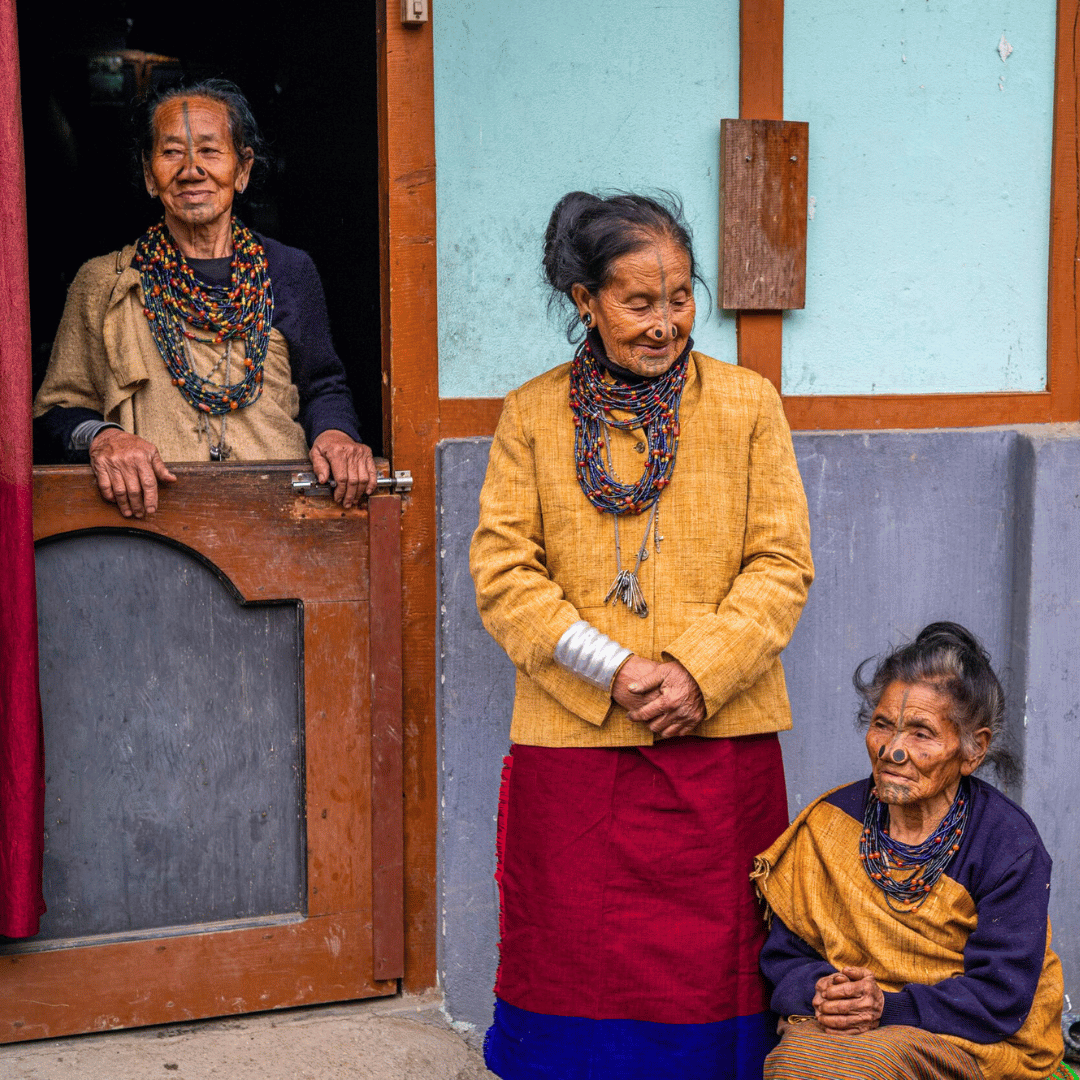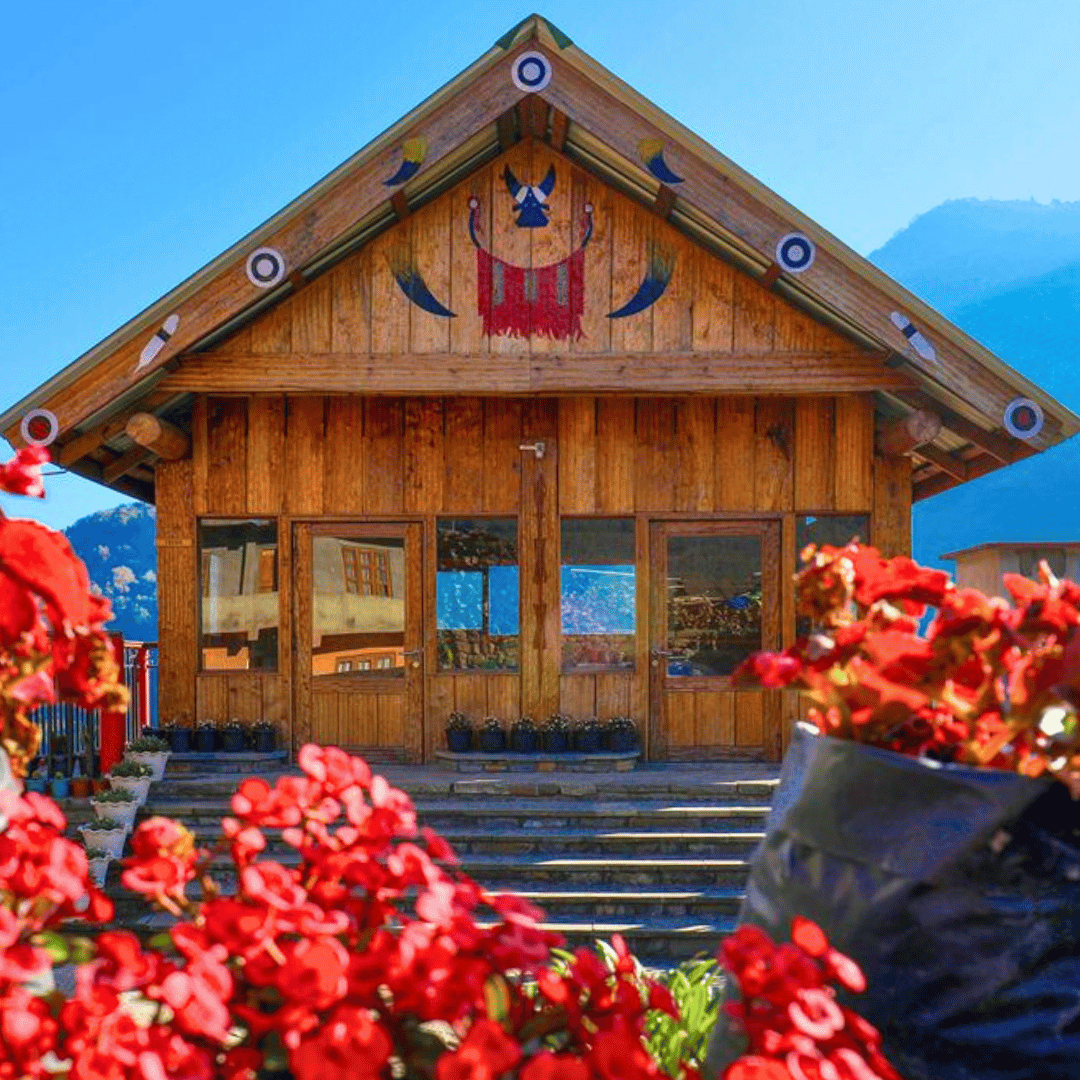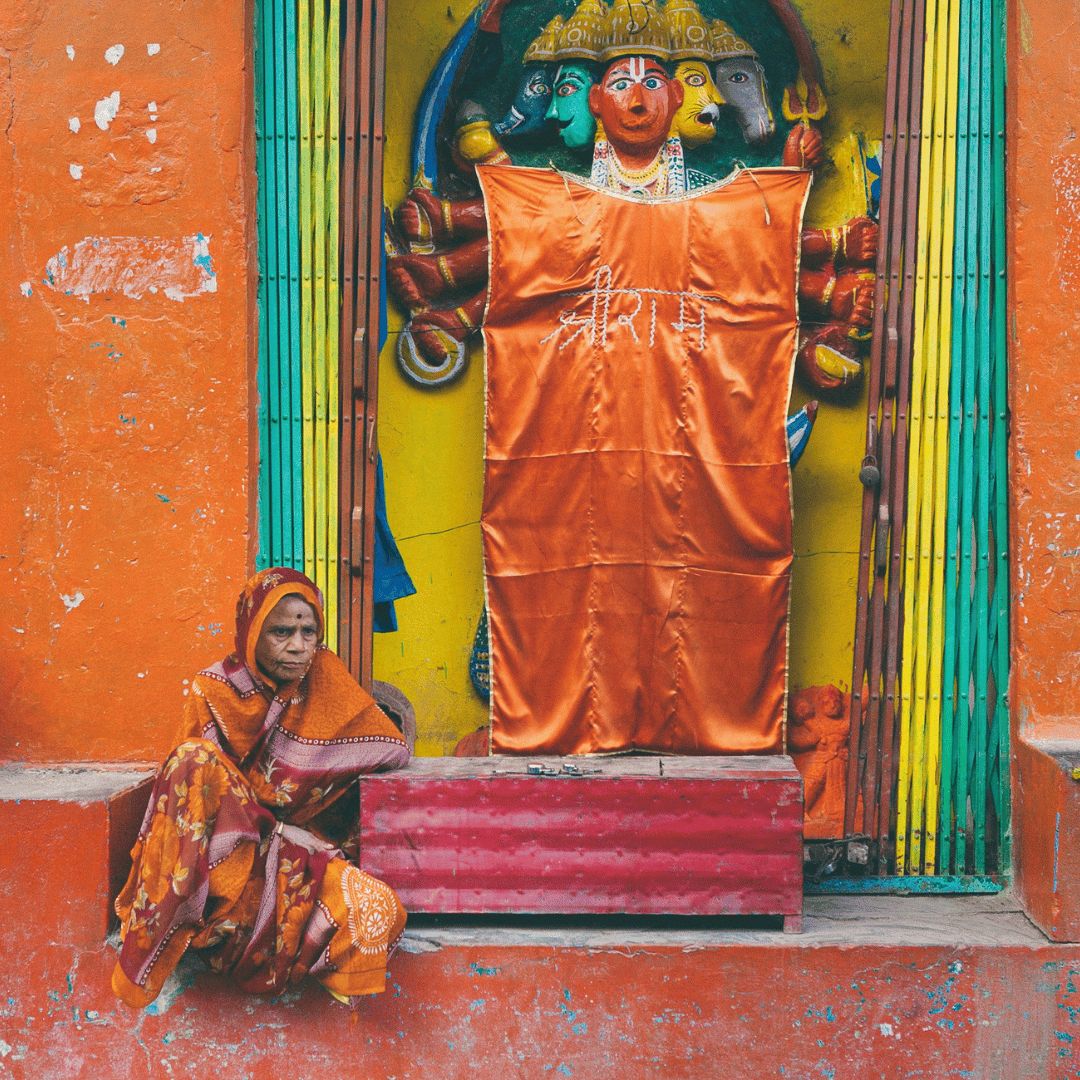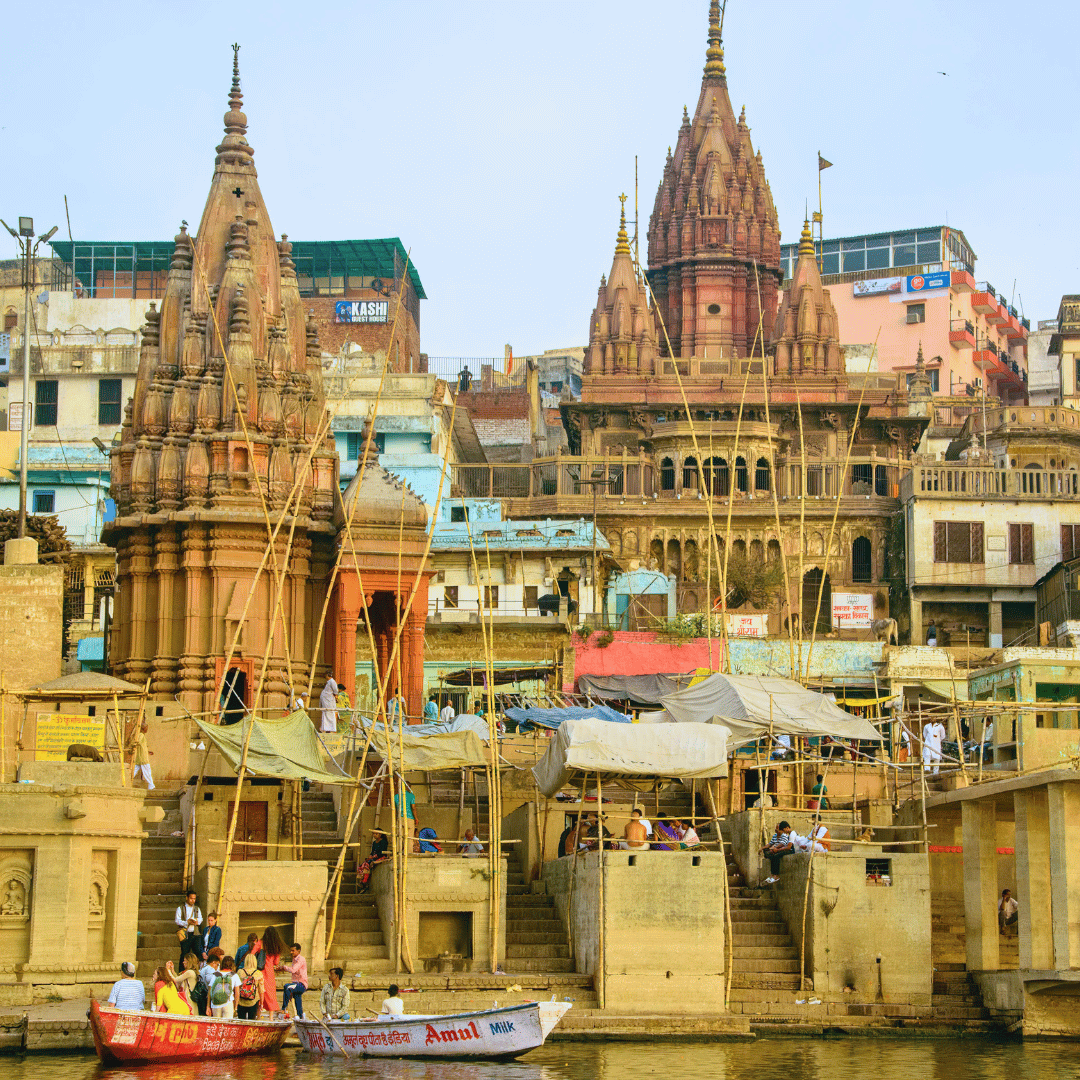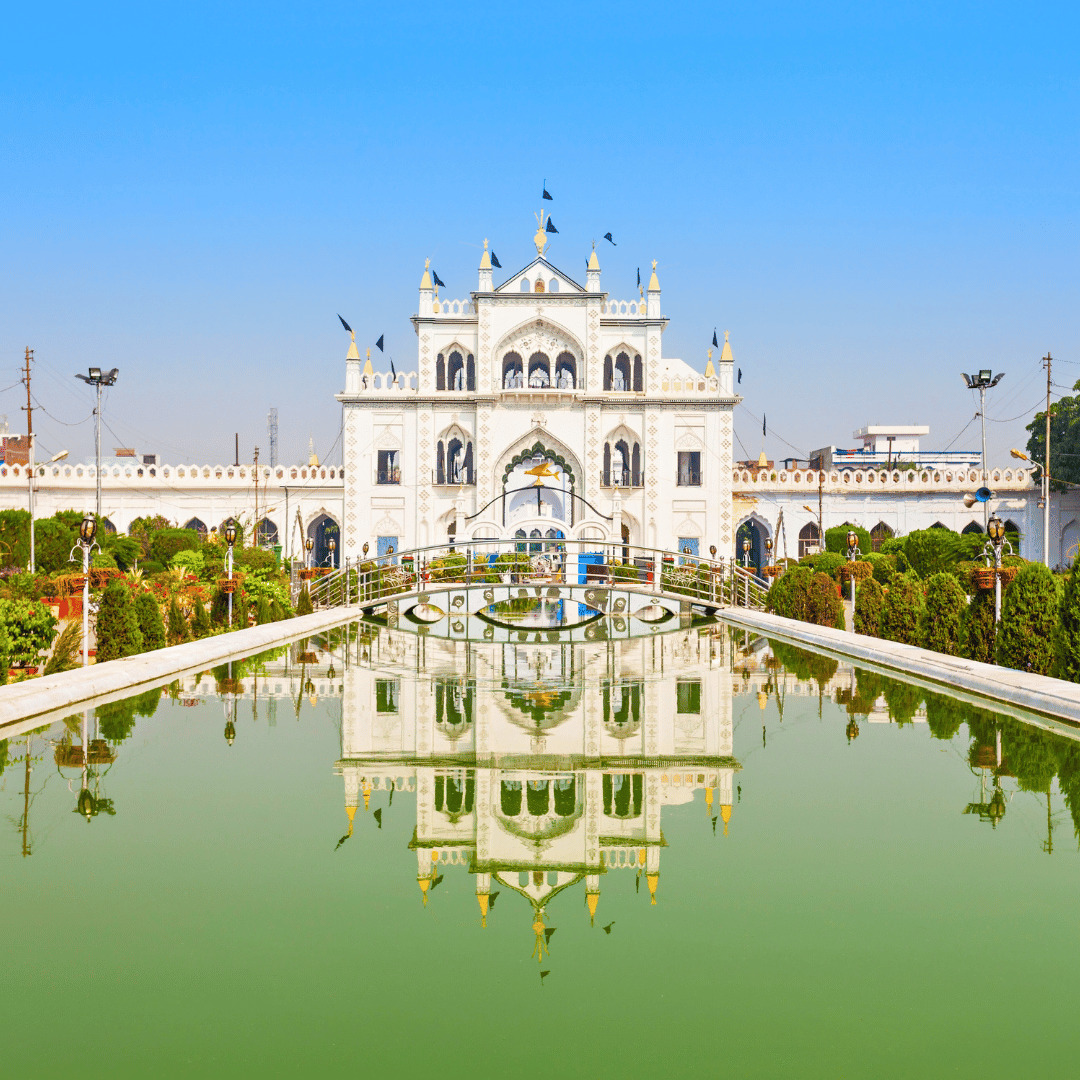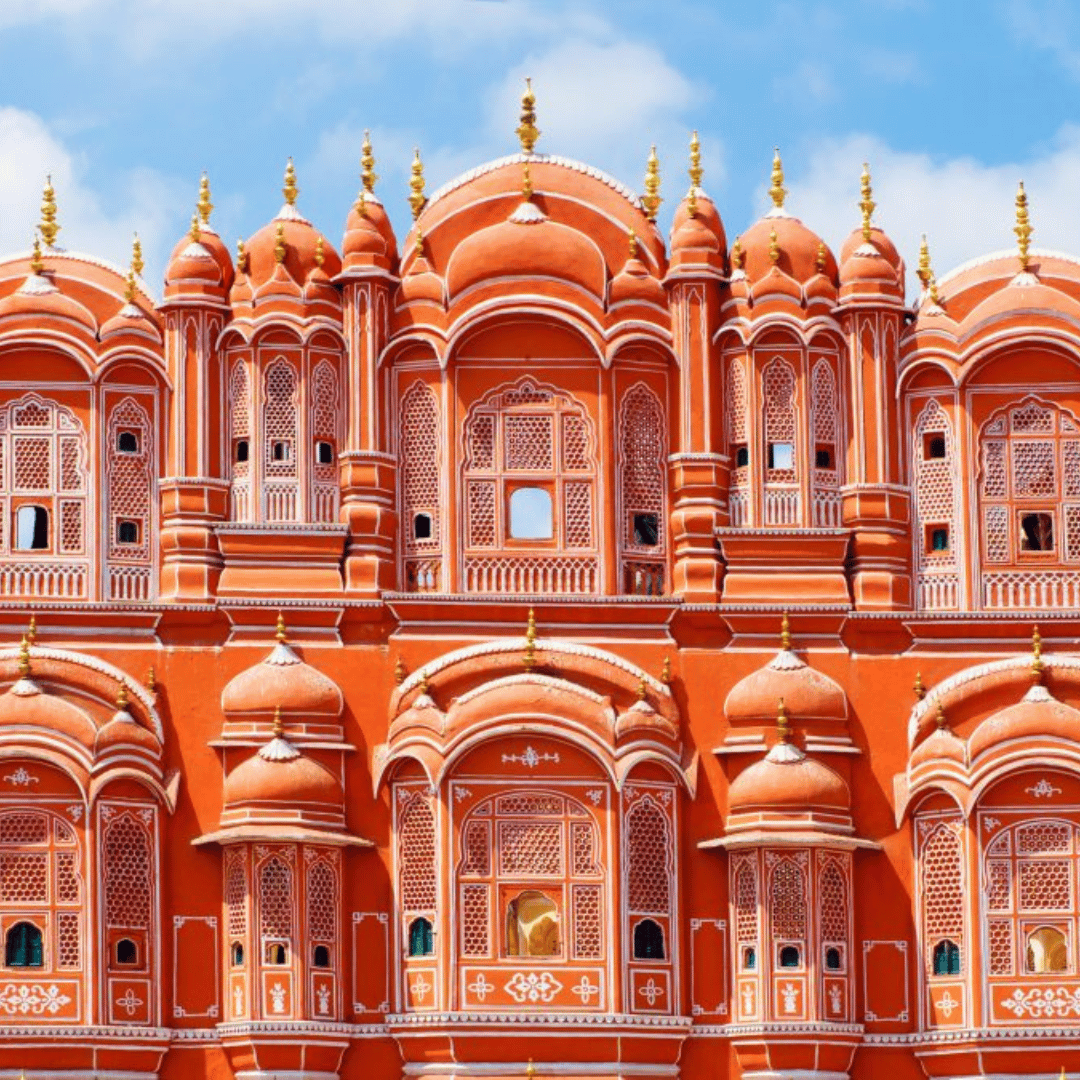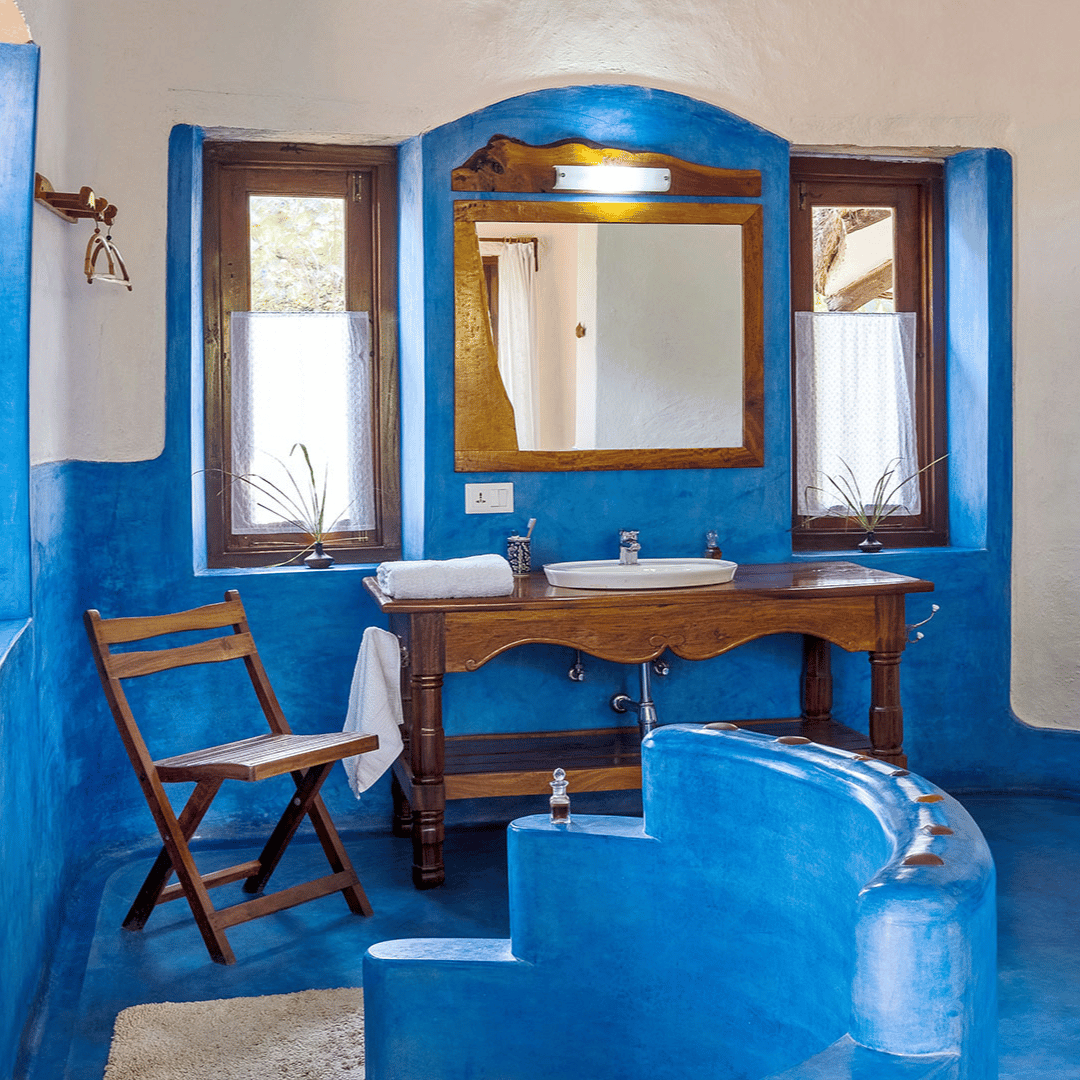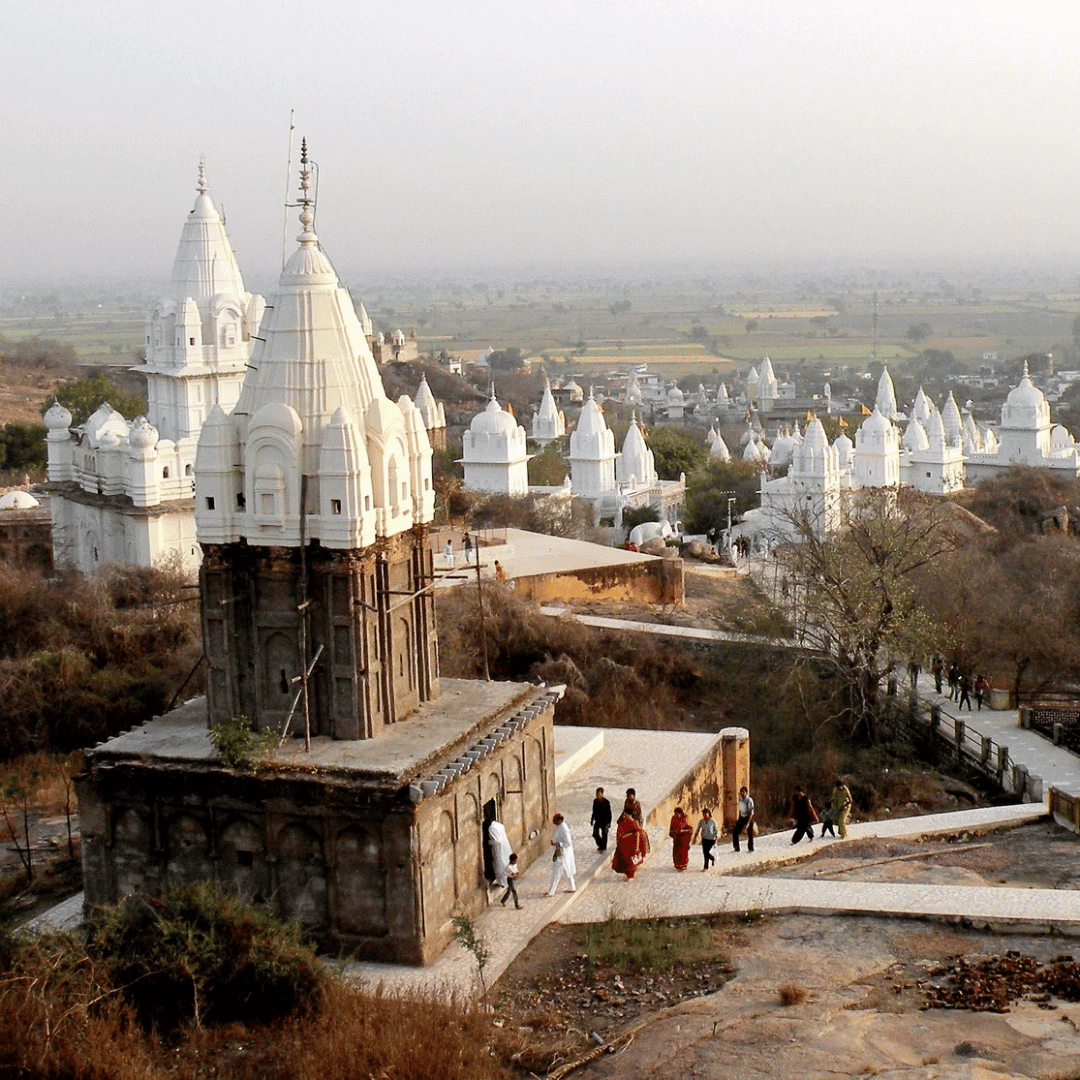Complete North to South India Travel Itinerary
-
Welcome to India! On arrival in Delhi, you’ll be met by a local representative and transferred to your hotel for check-in.
As the capital of India and home to over 16 million people, Delhi is a vast, vibrant and often overwhelming introduction to the country - where the energy of daily life seems to spill into every corner, including the arrivals hall. The city is a dynamic mix of ancient and modern, where centuries-old ruins stand beside gleaming office towers, and narrow backstreets open suddenly into grand boulevards.
Delhi has served as the capital for many of India’s former empires, and its layers of history are visible everywhere in its forts, tombs, mosques, colonial buildings and busy laneways. It is also a centre of contemporary culture, with an ever-growing collection of art galleries, museums, markets and restaurants. With such a wealth of things to see and experience, you could spend a lifetime here and still only scratch the surface.
After checking in, the remainder of the day is at your leisure to rest, adjust to the pace of India, or begin exploring your local surrounds.
-
Spend the day exploring Delhi with a guided sightseeing tour that takes in both the historic lanes of Old Delhi and the grand avenues of New Delhi.
Begin in Old Delhi, where centuries of history unfold amidst the noise and movement of daily life. Visit Jama Masjid, one of India’s largest and most impressive mosques, built by Mughal emperor Shah Jahan. From here, hop on a cycle rickshaw for a ride through the chaotic and colourful bazaars of Chandni Chowk - an experience full of noise, spice-laden air, and bustling street trade.
Stop at Raj Ghat, a quiet riverside memorial marking the cremation site of Mahatma Gandhi. Its simplicity and peaceful setting offer a moment of reflection in contrast to the energy of the surrounding city.
In the afternoon, shift gears and explore New Delhi, a planned city developed during the British colonial period. Drive past the stately government buildings, Parliament House, and India Gate, all set along broad tree-lined boulevards designed by architect Edwin Lutyens. Visit the striking Bahá’í Lotus Temple, known for its distinctive flower-like architecture and peaceful ambiance.
Finish the day at the Qutub Minar complex in South Delhi, home to a towering 12th-century minaret surrounded by early Indo-Islamic ruins. With its blend of ancient monuments and colonial elegance, today’s journey through Delhi offers a well-rounded look at the many layers that define this extraordinary capital.
-
Today, board a flight to Varanasi - one of the holiest cities in India and a place of deep spiritual significance for Hindus. Believed to be one of the oldest continuously inhabited cities in the world, Varanasi has long drawn pilgrims seeking liberation (moksha) and blessings from the sacred River Ganges. With its narrow lanes, age-old temples, and countless shrines, the city exudes a strong sense of history and devotion that sets it apart from anywhere else in India.
Upon arrival, transfer to your accommodation and take some time to settle in before heading out in the late afternoon for a truly memorable experience. Join your guide for a boat ride on the Ganges, just as the sun begins to set and the city prepares for its nightly ritual.
As you glide along the river, you’ll witness the Ganga Aarti - a powerful Hindu ceremony performed every evening at Dashashwamedh Ghat. Priests dressed in saffron robes conduct the ritual with oil lamps, incense, chanting and the rhythmic sound of bells, while hundreds of devotees and onlookers gather on the ghats and in boats. The glow of the fire-lit puja, set against the sound of prayer and flowing water, creates a hauntingly beautiful scene.
Your guide will help interpret the ceremony and its significance, offering insight into Varanasi’s enduring role as a centre of faith and tradition. It’s a moving introduction to one of India’s most spiritually charged cities.
-
This morning, set out on a guided walking tour of Varanasi’s old town, a maze of ancient laneways filled with life, colour and devotion. This part of the city has remained much the same for centuries and offers a close-up view of daily life in one of the world’s oldest living cities.
As you wander on foot, you’ll find narrow alleys leading down to the ghats, the stone steps that stretch into the waters of the Ganges. These lanes are busy with scenes of everyday life - children playing cricket, cows ambling past, families preparing offerings, and the sound of temple bells mixing with street chatter.
Your guide will help uncover the layers of the city, pointing out small shrines tucked into alcoves, hand-painted images of gods on the walls, and the scent of incense drifting from temples. You’ll pass stalls selling brassware, marigold garlands, and the rich silk Varanasi is famous for, with weavers often working just behind their shops.
You may explore Vishwanath Gali, a bustling lane that leads to the Kashi Vishwanath Temple, one of the most sacred sites dedicated to Lord Shiva. While the temple interior is only accessible to Hindus, the surrounding area is full of interest, with its constant flow of pilgrims, traders and worshippers.
This walk is a chance to experience the rhythm of daily life in Varanasi and to see how faith and routine shape the streets, temples and people of this deeply spiritual city.
-
In Varanasi, the Ganges is the heart of the city. Much of daily life, ritual and rhythm revolves around the river, particularly in the early hours. At dawn, thousands of pilgrims make their way to the ghats to offer prayers, bathe in the sacred water, and greet the new day with devotion. It’s a time when the spiritual pulse of the city is at its most visible.
This morning, a local guide will accompany you on a peaceful boat ride along the river. As the sun rises over the Ganges, the light bathes the city in a soft glow, casting long reflections across the water. You'll witness priests performing morning rituals, people chanting, and locals quietly beginning their day. From the boat, the view of the ghats and temples is both serene and stirring, capturing the essence of Varanasi’s spiritual life.
Afterwards, return to your hotel for breakfast before transferring to the airport for your flight to Khajuraho.
On arrival, you’ll be introduced to one of India’s most distinctive UNESCO World Heritage sites. The temples of Khajuraho, built between the 10th and 12th centuries by the Chandela dynasty, are best known for their intricate and expressive carvings, including the famously erotic sculptures inspired by the Kama Sutra. Far from being solely sensual, the carvings also depict scenes of everyday life, mythological stories, gods, musicians and dancers - together offering a rich view of Indian thought and artistry during that period.
This afternoon, explore some of the western group of temples with a local guide, who will explain the symbolism and stories behind the carvings. In the evening, you may have the chance to attend a sound and light show at the temple complex, which brings the site’s history to life with narration, music and atmospheric lighting.
-
Begin your journey today with a four-hour drive to Orchha, a quiet riverside town in Madhya Pradesh that was once the seat of a powerful Rajput kingdom. Tucked away on a rocky island formed by the Betwa River, Orchha feels frozen in time, with its grand architecture standing as a reminder of its former glory.
Though no longer a royal capital, the town retains much of its historic charm. Dominating the skyline are a cluster of 17th-century temples and palaces, many of which are still in use. These buildings, with their distinctive domes and spires, continue to draw thousands of devotees and pilgrims throughout the year.
This afternoon, explore some of Orchha’s most notable landmarks with your guide. Visit the Ram Raja Temple, an unusual structure in that it is both palace and temple, and one of the few places in India where Lord Rama is worshipped as a king. You’ll also see the Lakshmi Narayan Temple, known for its well-preserved murals that blend religious and secular themes in vivid colour and detail.
Walk along the banks of the Betwa River to view the series of fourteen cenotaphs, or chhatris, dedicated to the former rulers of Orchha. These elegant structures, lined up along the river’s edge, offer a peaceful place to reflect and enjoy the views of the surrounding countryside. The slower pace and quiet beauty of Orchha provide a welcome contrast to the bustle of larger cities, making it a memorable stop on your journey.
-
This morning, transfer to the station to board a train to Agra, once the capital of the Mughal Empire and now home to some of India’s most iconic architectural treasures. Travelling by train offers a glimpse of daily life along the tracks, passing through towns, farmland and small settlements en route.
On arrival in Agra, you’ll be met at the station and transferred to your hotel. The rest of the afternoon is free for you to relax, explore the local area at your own pace, or simply enjoy some downtime ahead of tomorrow’s sightseeing.
Agra rose to prominence over 400 years ago under the rule of the Mughal emperors Akbar and Shah Jahan, who transformed it from a modest village into a grand imperial city. It was during this time that some of India’s most magnificent monuments were built, combining Persian, Islamic and Indian design traditions. Most famously, Emperor Shah Jahan commissioned the Taj Mahal - an enduring symbol of love and one of the most admired buildings in the world. With its blend of rich history, architectural beauty and riverside setting, Agra offers a fascinating window into the legacy of the Mughal era.
-
This morning, you have the option to rise early and visit the Taj Mahal at dawn - an ideal time to see this iconic monument in soft morning light, before the larger crowds arrive. The changing colours of the marble as the sun rises are mesmerising, and the peaceful atmosphere adds to the experience. If you prefer a slower start, you can visit a little later in the morning at your own pace.
Explore the Taj Mahal with an expert local guide who will bring to life the story behind its construction. Built by Emperor Shah Jahan in memory of his wife Mumtaz Mahal, this masterpiece of Mughal architecture is as much a symbol of love as it is an architectural marvel. Your guide will explain its design features, craftsmanship and the myths and legends that surround it. After your visit, return to the hotel for a relaxed breakfast.
Later in the morning or early afternoon, continue your exploration of Agra with a visit to Agra Fort. This grand red sandstone complex served both as a military stronghold and royal residence during the height of the Mughal Empire. Wander through its palaces, halls and courtyards, and take in views of the Taj Mahal from across the Yamuna River. Agra Fort offers a deeper insight into the lives of the emperors who once ruled from within its walls.
-
Depart Agra this morning for the five-hour drive to Karauli, a small town in rural Rajasthan known for its heritage charm and quiet pace of life. Along the way, stop to explore the remarkable deserted city of Fatehpur Sikri, located just outside Agra.
Built by the Mughal Emperor Akbar in the late 16th century, Fatehpur Sikri was intended to be the grand capital of his empire. Constructed almost entirely from red sandstone, it was a showpiece of architectural innovation and imperial ambition, blending Islamic and Hindu design elements across palaces, courtyards, mosques and audience halls. However, due to ongoing water shortages and political pressures, the city was abandoned only a few years after it was completed.
As a result, the complex remains in a particularly well-preserved state, offering an extraordinary glimpse into the height of Mughal architecture and urban planning. Highlights include the Diwan-i-Khas (Hall of Private Audience) with its beautifully carved central pillar, the elegant Jama Masjid, and the towering Buland Darwaza, a monumental gateway that still impresses today.
After your visit, continue the journey through the Rajasthani countryside to Karauli. Less visited than other parts of the state, Karauli offers a more off-the-beaten-track experience, with its palaces, temples and traditional lifestyle reflecting the quieter side of Rajasthan. On arrival, check in to your accommodation - a converted heritage property - and enjoy the remainder of the day at leisure.
-
This morning, set out on a jeep safari to the nearby Kaila Devi Wildlife Sanctuary, located on the fringes of the larger Ranthambhore National Park. The sanctuary is known for its rugged landscape of forested hills, open meadows and winding streams, making it an ideal spot for nature lovers and those wanting to experience the quieter beauty of Rajasthan’s wild spaces. While not as heavily visited as some of the larger parks, Kaila Devi is home to a variety of wildlife including deer, wild boar, jackals, and a rich variety of birdlife.
En route to the sanctuary, stop at the revered Kaila Devi Temple, one of the most significant religious sites in the region. Dedicated to the goddess Kaila Devi, a form of Durga, the temple draws thousands of pilgrims each year, particularly during annual fairs and festivals. Your guide will explain the temple’s importance and rituals, giving insight into the local religious practices and community devotion.
In the afternoon, enjoy a relaxed camel cart ride through a nearby village. This is a gentle way to experience rural Rajasthan, travelling at the pace of village life. As you move through the lanes, you’ll pass mud-brick homes, local farms, and groups of children waving with curiosity. Stop to explore a few local handicraft shops, where artisans sell a variety of traditional items including lacquer work, vibrant glass bangles, hand-carved wooden toys, and bamboo products. You may also have the chance to sample some local sweets, freshly prepared using age-old recipes. The experience offers a glimpse into everyday life and the creative traditions that remain strong in this part of the state.
-
After breakfast, begin the drive to Jaipur, a journey of around four to five hours through the countryside of Rajasthan. On arrival in the state’s capital, you’ll soon see why Jaipur is called the Pink City. The old town’s buildings are painted in a distinctive terracotta colour, originally chosen to welcome the Prince of Wales in 1876 and now part of the city’s identity.
Jaipur is a vibrant and friendly city, known for its royal palaces, historic forts and lively markets. It’s also a centre for traditional crafts, with its bazaars offering everything from jewellery and hand-block printed textiles to embroidered bags and colourful puppets.
Check in to your hotel on arrival. Many travellers choose to stay in heritage properties that once belonged to noble families, now beautifully restored and offering a glimpse into the city’s past. The rest of the day is free. You might like to relax and enjoy your hotel’s courtyards and gardens, or take a walk through one of the nearby markets to soak up the colour, energy and rhythm of daily life in Jaipur.
-
Spend the day exploring the highlights of Jaipur with a knowledgeable local guide, who will bring the city’s rich history and vibrant culture to life. Begin with a visit to Amber Fort, set on a hill just outside the city. Once the stronghold of the Kachwaha rulers, the fort is an impressive blend of Mughal and Rajput architecture, with sweeping courtyards, mirror-lined halls and views over Maota Lake below.
Continue on to the Hawa Mahal, or Palace of Winds, one of Jaipur’s most recognisable landmarks. This pink sandstone façade, with its hundreds of small windows and screened balconies, was built so royal women could observe street life without being seen. It’s a favourite spot for photography and a wonderful example of the city’s unique architectural style.
Next, visit the City Palace, a large complex that remains home to Jaipur’s royal family. Your guide will show you around its courtyards, museums and galleries, which display royal costumes, weapons and art. Nearby is Jantar Mantar, the observatory built by Maharaja Jai Singh in the 18th century. The site features a series of enormous astronomical instruments, some still remarkably accurate today, and offers a fascinating glimpse into the scientific curiosity of the time.
In the afternoon, you have a few options depending on your interests. You might like to experience Indian cinema at its most glamorous with a visit to the Raj Mandir, Jaipur’s famous art deco-style movie theatre, where the energy of the crowd is just as entertaining as the film itself. Alternatively, head to the local bazaars for some shopping - Jaipur is known for its textiles, jewellery, blue pottery and other traditional crafts. Whether you're buying a small souvenir or something more special to take home, bargaining is expected and a part of the overall experience.
-
This morning, depart Jaipur and drive around three hours to the town of Pushkar, located on the edge of the Thar Desert. While small in size, Pushkar holds a special place in the hearts of many Hindus and travellers alike. It’s a place where religious tradition, mythology and everyday life intertwine, giving the town a peaceful yet spiritually charged atmosphere.
Pushkar is centred around a sacred lake, believed to have been created by the Hindu god Brahma himself. According to legend, Brahma was searching for a place on earth to perform a holy ritual known as a Vedic Yagna. When he dropped a lotus flower, it fell to the ground and formed the Pushkar Lake. As a result, the town has long been an important pilgrimage site.
Among the 500 or so temples scattered throughout Pushkar, the most notable is the Brahma Temple. One of the very few temples in the world dedicated to Lord Brahma, it attracts Hindu pilgrims from across India who come to pay their respects and take ritual dips in the holy lake. The temple’s simplicity stands in contrast to its deep spiritual importance, and its presence makes Pushkar a particularly sacred destination.
With its whitewashed buildings, lakeside ghats, and laid-back pace, Pushkar is also known for its gentle charm and has become a favourite stop for travellers seeking both cultural depth and a chance to slow down. On arrival, check in to your accommodation and begin to take in the town’s unique rhythm.
Pushkar Camel Fair
The world famous Pushkar Camel Fair typically takes place in October or November, timed to coincide with the Hindu festival of Kartik Purnima, which falls on the full moon day of the month of Kartik (according to the Hindu lunar calendar).In 2025, the main days of the fair will be around the 10th to 14th of November, with the full moon (Kartik Purnima) on 14 November 2025. The fair usually spans 7 to 10 days, with the first half focused on camel and livestock trading, and the second half centred on religious rituals, temple visits, and cultural events. It’s a good idea to arrive a few days before the full moon to catch the full experience, especially the vibrant camel trading days and folk performances.
-
After breakfast, set off on the four-hour drive to the village of Jojawar, a lesser-known gem tucked away in the rural heart of Rajasthan. Far from the more heavily visited cities, Jojawar offers a genuine taste of village life, with its quiet pace, surrounding hills and patchwork of farmland.
Your stay here is at Rawla Jojawar, a beautifully restored heritage property that was once the home of the local noble family. The hotel blends traditional charm with warm hospitality, offering a peaceful and character-filled base for exploring the area. With courtyards, shaded verandahs and a sense of history in every detail, it provides a refreshing change of pace from the cities.
In the late afternoon, head out on a jeep safari into the surrounding countryside. The experience offers the chance to visit the homesteads of the Rabari community - semi-nomadic pastoralists known for their distinctive dress, strong cultural identity and camel herding traditions. Your guide will explain their way of life and how they continue to maintain traditional practices in a changing world.
The drive also takes you through small villages and farmlands where local life continues much as it has for generations. You’ll pass bullock carts, children playing in the dust, women drawing water from wells, and fields of millet, mustard or chillies depending on the season. The landscape is dotted with acacia trees, low stone walls and views of the nearby Aravalli hills.
This is not a rushed or commercialised experience - it’s a quiet, respectful introduction to the rhythms of rural Rajasthan. Return to the hotel as the sun begins to set, and enjoy a relaxed evening in this peaceful setting.
-
This morning, enjoy a scenic one-hour ride on a local train that winds its way through the Aravalli Hills. The journey begins at the foot of the hills and gradually climbs through thick forests and rocky terrain, offering glimpses of rural life and untouched natural beauty along the way. This narrow-gauge railway section is a charming reminder of India’s old rail network and makes for a relaxed and memorable start to the day. The ride ends at Kambli Ghat, the highest railway station in the Aravalli range.
Later in the morning, begin the four-hour drive to Udaipur, one of Rajasthan’s most picturesque and romantic cities. Often called the 'City of Lakes', Udaipur is set around the shimmering waters of Lake Pichola and surrounded by the lush, rolling hills of the Aravalli range. The drive itself is pleasant, passing through small towns, dry scrubland and hilly terrain as you make your way south.
Udaipur’s beauty lies not just in its natural setting but in its elegant architecture - palaces, whitewashed havelis, leafy gardens, and temples with carved facades are scattered throughout the old city. The calm of the lakes and the charm of the narrow lanes give Udaipur a very different feel to other Rajasthani cities.
On arrival, check in to your hotel and enjoy the remainder of the afternoon at leisure. You may wish to take a gentle walk along the lakefront as the sun begins to set, or find a rooftop restaurant with views across the water and distant hills. Udaipur is especially atmospheric in the early evening, with its soft light, reflections on the lake, and the quiet hum of local life.
-
Surrounded by green hills and built across three interconnected lakes, Udaipur is often referred to as the ‘Venice of the East’. Its whitewashed buildings, narrow laneways and serene waters give the city a distinct charm, quite unlike any other in Rajasthan. This morning, head out on a guided city tour to explore some of Udaipur’s most iconic landmarks.
Begin with a visit to the City Palace, an impressive complex of courtyards, balconies, towers and domes perched on the banks of Lake Pichola. Constructed over several centuries by various rulers of the Mewar dynasty, the palace offers panoramic views over the lake and the surrounding hills. Inside, you’ll find ornate rooms, mirrored halls, detailed mosaics and a museum that provides insight into the lives of Udaipur’s royal family.
Continue to the Jagdish Temple, a short walk from the City Palace. Built in the mid-17th century, this beautifully preserved Hindu temple is dedicated to Lord Vishnu. It features intricate carvings, tiered spires and lively scenes of gods, dancers and animals carved in stone - an excellent example of Indo-Aryan temple architecture.
The afternoon is free for you to enjoy at your own pace. You might choose to explore the old city’s laneways filled with handicraft shops, textile stalls, rooftop cafés and quiet corners. Alternatively, take some time to relax at your heritage hotel, many of which are former royal residences with courtyards, shaded terraces and views over the lake.
As the day winds down, enjoy a peaceful boat cruise on Lake Pichola in the soft glow of late afternoon. The still waters reflect the palaces and temples on its shores, and you’ll cruise past the famous Lake Palace and Jag Mandir, both set on small islands. It’s a quiet and atmospheric way to take in Udaipur’s beauty as the sun sets behind the hills.
-
This morning, transfer to the airport for your flight to Chennai, the capital of Tamil Nadu and one of South India’s major cities. On arrival, you’ll be met by your driver and begin the journey south to Pondicherry, a coastal town with a unique cultural identity shaped by its French colonial past.
The drive from Chennai to Pondicherry takes around three to four hours and follows the scenic East Coast Road, passing salt flats, fishing villages and glimpses of the Bay of Bengal. As you approach Pondicherry, you’ll notice a shift in atmosphere. The pace slows, the streets grow quieter, and the influence of French architecture and planning becomes evident.
Pondicherry - often affectionately called ‘Pondy’ - was once the capital of French India and served as an important trading outpost during the 17th and 18th centuries. While it officially became part of the Indian republic in 1954, the French connection has endured. You’ll still hear French spoken, see signage in both French and Tamil, and encounter cafés serving croissants alongside South Indian filter coffee.
The town’s French Quarter, with its colonial-era buildings, tree-lined boulevards and pastel facades, offers a distinctive charm that sets Pondicherry apart from other Indian cities. It's a place where European and Indian influences blend seamlessly, and is reflected in everything from architecture and food, to the people who call it home. After checking in to your hotel, the rest of the day is free to relax or begin exploring the town at your leisure.
-
Today is yours to explore the many sides of Pondicherry, a town that blends colonial elegance with South Indian warmth and energy. Begin the day with a guided walking tour through the French Quarter, where wide boulevards, mustard-yellow buildings, wrought-iron balconies and shaded footpaths give the neighbourhood its European character. Your guide will share insights into the town’s colonial past, architecture and how the French influence continues to shape daily life here.
Continue to the Sri Aurobindo Ashram, one of Pondicherry’s most important spiritual centres, founded by Indian philosopher and yogi Sri Aurobindo and his spiritual collaborator, the Mother. Within the ashram’s complex, you can visit its paper-making and incense units - small-scale workshops known for producing high-quality handmade goods using traditional methods. These are excellent places to learn about the Ashram’s commitment to simplicity, sustainability and mindful living.
Pondicherry is also known for its boutique shops and excellent dining. In the town’s heritage district and beyond, you’ll find a mix of French cafés, South Indian eateries, and stylish boutiques offering clothing, handmade stationery, homewares, and organic products. Lunch is a good opportunity to try one of Pondicherry’s highly regarded French-influenced restaurants, many of which use locally grown produce.
In the afternoon, you may choose to visit Auroville, located just outside Pondicherry. Conceived in the late 1960s by the Mother and supported by UNESCO and the Indian government, Auroville was established as an experimental township dedicated to the idea of human unity. People from over 50 countries live and work here, contributing to a wide range of community-focused and ecological projects. A visit typically includes the Matrimandir, a striking spherical meditation space set in peaceful gardens, and time to learn about the township’s founding ideals and ongoing experiments in sustainable living.
In the early evening, return to Pondicherry and take a stroll along the beachfront promenade. This traffic-free stretch comes alive at sunset, with families, couples and street vendors creating a relaxed and festive atmosphere - an ideal way to wind down the day and take in the town’s seaside charm.
-
After breakfast, depart Pondicherry for the four-hour drive inland to Kumbakonam, a historic temple town in the heart of Tamil Nadu. As you travel through the countryside, you’ll pass through quiet villages, rice paddies, and groves of coconut palms - offering a rare glimpse into everyday life in rural South India.
En route, stop at the small but historically significant village of Gangaikondacholapuram. Despite its size, this village is home to one of the finest examples of Chola architecture in the region. The grand temple here was built in the 11th century by Emperor Rajendra Chola I to commemorate his victorious military campaigns. Though less visited than its more famous counterpart in Thanjavur, the temple is just as impressive, with towering gopurams, finely carved stonework, and a peaceful atmosphere that invites quiet exploration.
From here, continue on to Kumbakonam, a town known for its centuries-old temples, traditional brassware, and strong links to South Indian religious and cultural life. Your accommodation is tucked away just outside the town, set amidst groves of coconut, mango and teak trees. Designed in the style of a traditional Tamil home, the property offers more than just comfort - it gives you a chance to experience the region’s architectural style and rhythms of daily life.
With open courtyards, pillared verandahs and earthy materials, the setting reflects the slow-paced charm of rural Tamil Nadu. You may hear birdsong in the early evening or spot locals tending to the gardens. After checking in, enjoy the remainder of the day at leisure - perhaps with a walk through the surrounding groves or time spent simply relaxing and soaking in the atmosphere.
-
Depart this morning for Chettinad, travelling through the fertile plains of Tamil Nadu. Along the way, stop in Thanjavur (also known as Tanjore) to visit the remarkable Brihadishwara Temple - one of the great masterpieces of Indian temple architecture. Built in the 11th century by the Chola king Rajaraja I, this World Heritage-listed site is widely regarded as the crowning achievement of Chola design. The temple's soaring tower, carved stone figures, and spacious courtyards offer a powerful sense of symmetry, scale and spiritual purpose. Your guide will explain the symbolism and significance behind the temple's layout and the role it continues to play in local religious life.
After exploring the temple complex, continue your journey into the Chettinad region - a part of Tamil Nadu known for its distinctive culture, architecture and cuisine. Once home to the wealthy Chettiar merchant and banking community, the region flourished in the 18th and 19th centuries as traders established links with Southeast Asia. The result of this prosperity can still be seen in the grand mansions that dot the villages of Chettinad. Built using Burmese teak, Italian marble and European tilework, these homes are a striking fusion of local design and global influence.
Many of the mansions have since fallen into disrepair, but a growing number have been lovingly restored, including the property where you’ll stay. Your accommodation is set in one of these historic homes, offering high ceilings, inner courtyards, antique furnishings and a strong sense of the region’s heritage. Staying here offers more than comfort: it’s a window into the lifestyle of a community that once shaped the economic life of South India.
Arrive and settle in for a relaxed afternoon. Depending on your interests, you may choose to explore the village on foot, admire local crafts, or simply enjoy the peaceful surroundings of your heritage stay.
-
This morning, set out on a guided tour of Madurai to further explore the city’s rich history and cultural heritage. A highlight of the tour is a visit to the Thirumalai Nayak Palace, an impressive 17th-century structure built in 1636 by King Thirumalai Nayak, one of the most influential rulers of the Madurai Nayak dynasty. A noted patron of art and architecture, the king played a key role in reviving and enhancing many of the city’s ancient temples, originally built during the Pandya period.
The palace itself is a striking example of architectural fusion, blending classical Dravidian design with Islamic influences - evident in its arches, domes and decorative details. Though only a fraction of the original structure remains today, the existing section, known as the Svarga Vilasam or 'Heavenly Pavilion', offers a powerful sense of the grandeur that once defined the complex. Covering nearly 4,000 square metres and framed by towering circular columns, the pavilion’s vast open courtyard and soaring ceilings evoke a regal atmosphere, offering a glimpse into the opulence of Madurai’s past. During its heyday, the palace was considered one of the finest in South India.
Following your visit, take some time to explore Madurai’s bustling markets. The city’s bazaars are vibrant and full of local life, with stalls selling everything from fragrant jasmine flowers and brightly coloured saris to brassware, snacks and temple offerings. It’s a wonderful opportunity to observe the everyday rhythms of the city and perhaps pick up a few locally made items.
Later, depart Madurai for the two-hour drive to Chettinad, a region known for its rich heritage, distinctive cuisine and grand mansions. On arrival, check in to your hotel - a beautifully restored heritage property - and enjoy the remainder of the day at leisure. You might take a quiet walk through the village streets or simply relax and unwind in preparation for your exploration of Chettinad the following day.
-
This morning, set off on the drive to Madurai, a journey of around two to two and a half hours through the changing rural landscape of Tamil Nadu. As you approach the city, you’ll notice the skyline gradually transformed by the presence of towering temple gateways, or gopurams, signalling your arrival in one of India’s oldest and most spiritually significant cities.
At the heart of Madurai is the famed Meenakshi Amman Temple, dedicated to the ‘fish-eyed goddess’ Meenakshi and her consort Sundareshwar, a form of Shiva. The temple complex is vast and elaborate, with multiple shrines, pillared halls and 14 ornately decorated gopurams, some soaring nearly 50 metres high. Covered in thousands of brightly painted carvings of gods, goddesses, and mythical creatures, the temple is a striking expression of Dravidian architecture and religious devotion.
After settling into your accommodation, the best way to experience Madurai is on foot. The old city is compact, and the streets are full of energy - lined with flower sellers, tailors, booksellers, street food vendors and local tea stalls. Enjoy wandering the laneways at your own pace, perhaps stopping for a cup of chai and a chat with locals, or browsing shops selling temple offerings and handmade crafts.
Many of the roads in the old town radiate from the temple itself, making it easy to find your bearings without too much worry. As you stroll, you’ll notice how the life of the city continues to revolve around the temple - its presence is not only physical, but deeply woven into the rhythm of Madurai's daily life.
-
Spend today discovering the many layers of Madurai, a city where history, religion and everyday life blend together in a way that feels uniquely South Indian. Begin with a visit to the iconic Meenakshi Amman Temple, the city’s spiritual and cultural heart. Sprawling over several hectares, the temple is one of the most impressive in India, both for its scale and its elaborate Dravidian architecture. Its towering gopurams are covered in thousands of brightly coloured sculptures, and the temple itself is a living, breathing space - where ceremonies, chants, weddings and rituals take place alongside locals shopping for garlands and offerings.
Inside the complex, wander through vast pillared halls, intricate shrines, and echoing corridors, taking in the energy and devotion that fills the space. Keep an eye out for the temple elephant, often found standing quietly near one of the entrances, offering blessings to pilgrims with a gentle tap of the trunk in exchange for a small donation or garland. It’s a charming sight that reflects the temple’s blend of the sacred and the everyday.
Continue your adventure with a visit to the Thirumalai Nayak Palace, an impressive 17th-century structure that was once the residence of the Nayak rulers. The palace is a mix of Dravidian and European design, with grand courtyards, lofty pillars and arches that speak to the opulence of a bygone era. Though only part of the original complex remains, it still offers a sense of the royal grandeur that once defined Madurai.
Next, head to the Gandhi Memorial Museum, housed in a former palace building. The museum provides a thoughtful and well-curated account of India’s independence movement, with a focus on Mahatma Gandhi’s role and his connection to Madurai. Among its collection is a piece of the cloth Gandhi was wearing at the time of his assassination, a quietly powerful exhibit.
Later, make your way to the bustling tailors’ market, a vibrant hive of activity filled with shops selling fabrics, ready-made garments and tailored clothing. It’s a great place to practise your bargaining skills or simply observe the fast-paced rhythm of the local trade. Whether you're after a custom-made shirt or just browsing, the market gives you another taste of Madurai’s lively spirit.
-
This morning, depart Madurai and begin the scenic four-hour drive to Thekkady, travelling up the winding ghat road that climbs steadily into the Western Ghats. As you ascend, the temperature begins to cool and the landscape shifts - dry plains give way to lush hillsides, dense forests and mist-covered valleys. Located near the border of Tamil Nadu and Kerala, Thekkady sits at a higher altitude and offers a refreshing change in pace and climate.
Your destination is the Periyar Wildlife Sanctuary, one of the most well-known reserves in southern India. Spread across forested hills surrounding a manmade lake, the sanctuary is home to a wide range of wildlife including elephants, bison, sambar deer, monkeys and over 260 species of birds. While sightings are never guaranteed, the beauty of the forest, the peaceful setting and the sense of being surrounded by nature make any visit worthwhile.
In the afternoon, you’ll have the option to join a guided tour of a local spice plantation, one of the region’s signature experiences. Kerala is famed for its spice production, and here you can see first-hand how cardamom, pepper, cloves, nutmeg, turmeric and cinnamon are grown and harvested. As you walk through the shaded plantation paths, your guide will explain the various uses of each plant, both culinary and medicinal, as well as the traditional methods still used in cultivation.
Alternatively, nature lovers have the option to take part in a wildlife experience inside the Periyar reserve. This could be a guided nature walk with forest rangers, a boat ride on Periyar Lake, or even a short safari-style drive, depending on park schedules and availability. All activities are managed with conservation in mind, and the focus is as much on the forest ecosystem as on spotting animals.
-
After breakfast, set out on a relaxed three-hour drive into the foothills of the Western Ghats, the ancient mountain range that runs like a backbone down the western edge of South India. As you descend from Thekkady, the landscape gradually opens out into the green, rolling countryside of Kerala’s midlands, where the air is warm and fragrant with the scent of tropical vegetation and spice plantations.
Your destination is the town of Pala, a quiet and scenic corner of central Kerala, surrounded by hills covered in coffee, tea, pepper and cardamom plantations. Tucked away in this lush setting is your accommodation - a peaceful, palatial family home that offers a warm welcome and a slower pace of life. This heritage property, still lived in by its local owners, provides a glimpse into traditional Keralan hospitality, architecture and rural living.
The home is set amid expansive grounds planted with coconut palms, fruit trees and flowering gardens, and you may spot butterflies, tropical birds or even monkeys in the treetops. The house itself features large open verandahs, cool tiled floors and high ceilings - designed to suit Kerala’s tropical climate and relaxed rhythm of life.
The afternoon is free for you to unwind and enjoy your surroundings. You may like to take a walk through the plantation trails, sit with a book in the garden, or join your hosts for a cup of homegrown coffee or tea. It’s a chance to take a breath, soak up the greenery, and enjoy the quiet beauty of Kerala away from the busier tourist routes.
-
Enjoy a full day to take in the quiet charm of your surroundings in the Keralan midlands. This is a chance to slow down and experience a different side of India, where hospitality, nature and tradition come together in daily life.
Start the day with a guided walk through the property's spice garden and nearby rubber plantation. Your hosts will walk with you through groves of pepper vines, cardamom, nutmeg and fruit trees, sharing how these spices are grown, harvested and used. In the rubber plantation, you’ll see how the trees are tapped to collect latex, a process that has supported local livelihoods in this part of Kerala for generations.
Depending on the time of year, there may be a chance to observe elephants at work in the area. In some parts of rural Kerala, elephants are still used to assist with heavy lifting, particularly in forested areas, and seeing them in this role is a rare and memorable experience.
If you’d rather take it easy, there are plenty of ways to enjoy a quiet day at the property. You might like to book an Ayurvedic massage, which uses traditional herbal oils and gentle techniques to relax both body and mind. It’s a restful way to spend part of the day, especially in the peaceful setting of the countryside.
Later on, join your hosts for a cooking demonstration and learn how to prepare some of the local dishes typical of Kerala’s Syrian Catholic community. Meals here often include spiced stews, coconut-rich curries and seasonal vegetables, all cooked with care and served with warm hospitality.
Whether you're out exploring the plantation or simply relaxing on the verandah with a cup of homegrown tea, today is about enjoying the rhythm of life in this beautiful part of southern India.
-
This morning, depart by road for the town of Alleppey, also known as Alappuzha, the gateway to Kerala’s famous backwaters. The drive takes you through a patchwork of small villages, rice fields and coconut groves, giving way to the lush waterways that define this part of the state.
On arrival at the jetty, board your kettuvallam - a traditional rice barge that has been carefully converted into a comfortable houseboat. These boats are remarkable in their construction, built without the use of nails and held together entirely with coir rope made from coconut fibre. The design reflects generations of local boat-building knowledge and suits the rhythm of life on the backwaters perfectly.
Soon after you settle in, lunch will be served on board, prepared using local ingredients and traditional Kerala flavours. The cuisine often includes dishes such as fish curry, coconut-based vegetable stews, rice and crispy papadum, all made fresh by the boat’s crew.
Spend the afternoon cruising slowly through the narrow canals, lagoons and open waterways that wind through the countryside around Alleppey. From the shaded comfort of your cane deck chairs, watch as life unfolds along the banks - children walking home from school, women washing clothes at the water’s edge, farmers tending to flooded rice fields, and fishermen casting their nets from dugout canoes.
The pace is unhurried, the sounds muted except for birdsong and the gentle lapping of water, making it one of the most relaxing ways to experience Kerala. As the sun begins to set, the golden light reflects off the water and the surrounding palms, offering a memorable close to the day.
Your accommodation for the night is on board the houseboat, which is air-conditioned for comfort and fitted with simple but inviting facilities. Fall asleep to the quiet movement of water and the stillness of the backwaters under the stars.
-
After breakfast, disembark your houseboat at Kumarakom and transfer to your accommodation at Philipkutty’s Farm - a family-run homestay set on a small, working farm typical of the Kuttanad region. This part of Kerala, often referred to as the ‘rice bowl’ of the state, is known for its unique geography. The farm itself is a reclaimed property, located about two metres below the level of the surrounding lake. It is laid out with a network of canals and narrow ridges, where coconut palms, bananas, spices and a variety of vegetables are cultivated.
Philipkutty’s Farm offers a quiet and restful stay in independent waterfront villas that open onto the backwaters, surrounded by greenery and still water. The rest of the day is yours to enjoy at leisure, and there’s no shortage of ways to connect with the landscape, the people and the pace of rural life.
You might like to begin with a gentle walk around the farm, where you can learn more about traditional methods of cultivation, irrigation and sustainable farming in this low-lying region. Bird watching is excellent here, particularly in the early morning or late afternoon when local and migratory species are active. If you're feeling more energetic, take a bicycle out and explore the nearby countryside or cross to the mainland to visit the local village and market.
For those interested in culture and history, nearby sights include St Mary’s Parish Church in Vechoor, which dates back over 500 years and is one of the oldest Christian churches in the area. You can also visit a local Hindu temple to observe the customs and rituals that are an integral part of daily life in this part of Kerala.
Other activities include fishing from the edge of the canal, taking a dip in the property’s pool, or joining a hands-on cooking class to learn how to prepare local dishes using spices grown on the farm. Just across the water, an Ayurvedic centre offers wellness consultations and treatments, should you wish to experience Kerala’s traditional system of healing.
Whether you choose to fill your day with gentle exploration or simply relax on your verandah with a book and a cup of tea, Philipkutty’s Farm offers a warm and peaceful setting to experience the slower rhythm of life in the backwaters.
-
After a relaxed breakfast, make the short drive to Marari Beach, located on the Arabian Sea just north of Alleppey. This peaceful stretch of coastline is a welcome contrast to the busier inland areas, offering a quiet, laid-back atmosphere where palm trees sway gently over soft sands and fishing boats drift slowly along the shore.
Your accommodation for the next two nights is at a beachside resort known for its warm hospitality and focus on sustainability. The property is set in spacious tropical gardens, just a short walk from the beach, and is designed to reflect the character of a traditional Keralan village - complete with tiled roofs, open courtyards and coconut palms rustling in the breeze.
One of the highlights of your stay here is the food. The on-site restaurant places a strong emphasis on fresh, seasonal ingredients. Much of the produce comes from the resort’s own organic garden, and the seafood is sourced daily from local fishermen. Meals are often tailored to your preferences, and you’ll have the chance to enjoy regional Keralan dishes rich in coconut, curry leaves, spices and local herbs.
The rest of the day is free to enjoy as you wish. You might choose to spend the afternoon reading by the pool, walking along the beach, or simply relaxing in a hammock under the trees. The resort also offers yoga sessions, Ayurvedic treatments and cultural activities such as cooking demonstrations and village walks, should you feel like doing a little more.
Marari is not a busy tourist beach - it’s quiet and largely undeveloped, with a strong sense of community and a rhythm of life shaped by the sea. It’s the perfect place to pause, unwind and take in the natural beauty of Kerala’s coast.
-
Your time at Marari offers the perfect balance of rest and gentle exploration, with plenty of options to make the most of your peaceful coastal surroundings. Whether you’re looking to completely switch off or stay lightly active, there’s something here to suit your pace.
You might like to begin your day with a guided yoga session, often held in the open-air pavilion surrounded by palm trees and birdsong. Yoga here is unhurried and accessible, and a great way to ease into the day. Afterwards, treat yourself to a traditional Ayurvedic massage, where warm herbal oils are used to restore balance and ease any travel weariness.
For those keen to explore, the area is ideal for long walks or gentle bicycle rides through the nearby countryside. The roads are quiet and lined with coconut palms, and you’ll pass small family homes, temples, and glimpses of everyday life. Stop by the local village for a wander through its small shops and open-air markets, or chat with fishermen mending nets along the shore.
Back at the resort, you can join a cooking class to learn the techniques behind Keralan dishes such as meen pollichathu (fish wrapped in banana leaf) or thoran (a dry vegetable stir-fry with coconut). There’s also the option to enjoy a casual game of beach volleyball or tennis, or to join in with a traditional game of kabaddi or carrom, sometimes played by the resort staff and other guests.
Nature lovers might enjoy birdwatching in the early morning, as the resort grounds and nearby wetlands attract a variety of local and migratory species. If you’re interested in the culture of the area, ask about attending a local temple festival or a kathakali or mohiniyattam dance performance, which may be arranged nearby depending on the season.
Of course, you may prefer to do nothing at all - simply stretch out on a sun lounger, sip a fresh coconut, and let the rhythm of the sea do the rest.
-
This morning, set off on the short drive - just under an hour - from Marari to the historic port city of Cochin, also known as Kochi. Your destination is Fort Kochi, a coastal enclave with a long and layered past. Over the centuries, the area has seen Portuguese, Dutch, British and Chinese traders arrive and settle, each leaving their mark on the town’s culture, architecture and daily life. The result is a charming blend of colonial-era buildings, churches, narrow lanes, spice markets and waterfront views, all tied together with a relaxed, coastal atmosphere.
On arrival, check in to your hotel - many of which are converted heritage homes or boutique properties that reflect the character of the area. Once you’ve settled in, the rest of the day is yours to enjoy at your own pace.
Fort Kochi is one of the few places in India where walking is not only easy but encouraged. With very little traffic and flat, tree-lined streets, it’s ideal for exploring on foot. Take a gentle stroll past crumbling Portuguese villas, 17th-century churches and hidden courtyards draped in bougainvillea. You’ll likely pass locals playing chess in shaded parks, children riding bicycles after school, and cafés tucked into restored colonial buildings.
You might choose to pause for a traditional afternoon tea or a cool drink at one of the waterfront cafés, many of which are housed in old Dutch or British-era buildings. From here, you can watch the famous Chinese fishing nets in action as they rise and fall over the water - one of the city’s most recognisable sights.
-
This morning, set out to explore the historic precinct of Fort Kochi, a compact and atmospheric area that reflects the city’s rich multicultural past. With a local guide, begin your visit at the Dutch Palace in nearby Mattancherry - also known as the Mattancherry Palace. Despite the name, it was originally built by the Portuguese in the 16th century and later renovated by the Dutch. Inside, you’ll find remarkably well-preserved murals depicting scenes from the Ramayana, as well as royal artefacts and displays from the region’s history.
Continue to St Francis Church, the oldest European church in India, where Portuguese explorer Vasco da Gama was originally buried before his remains were later returned to Lisbon. Its simple yet elegant structure offers insight into the early colonial presence in Kerala. Not far from here, walk along the waterfront to see the iconic Chinese fishing nets in action. Believed to have been introduced by traders from the court of Kublai Khan, these large cantilevered nets have become a symbol of Fort Kochi. You can watch local fishermen operate them using a system of counterweights, a process that’s both rhythmic and impressive in its simplicity.
Fort Kochi’s quiet lanes are filled with character - lined with restored bungalows, art galleries, small boutiques and cafés. Spend some time browsing handmade crafts, textiles, jewellery and artworks from local and international artists. If you're interested in contemporary art, consider visiting the Kashi Art Gallery, housed in a heritage building and showcasing emerging talent.
A short auto-rickshaw ride away is Jewtown in Mattancherry, home to the Paradesi Synagogue, one of the oldest active synagogues in the Commonwealth. The area is rich in atmosphere, with its antique shops, spice markets and restored warehouses now functioning as quirky cafés and art spaces. It’s a great place to pick up vintage treasures, old maps, carved furniture, and aromatic local spices.
In the evening, attend a traditional Kathakali performance, a classical dance-drama that originated in Kerala. The experience begins with the fascinating ritual of the performers applying their elaborate makeup and donning colourful costumes and headpieces. The performance itself is expressive and intense, combining stylised gestures, music, and facial expressions to convey stories from Hindu epics such as the Mahabharata and Ramayana. A short introduction beforehand will help you understand the symbolism and significance behind the movements and characters.
-
This morning, depending on your flight time, enjoy a relaxed start to the day with breakfast and perhaps a final stroll through the quiet lanes of Fort Kochi or a peaceful moment by the waterfront. When you're ready, you’ll be transferred to Cochin International Airport for your onward journey. We hope you’ve enjoyed your in depth tour of India!
The India Unbound Difference
At India Unbound, we’ve spent twenty years on the ground in India, learning all about its intricacies, landscapes and cultures. We use this first-hand knowledge to carefully curate travel itineraries for our guests, and are proud to be a reputable private touring specialist. In addition, our team of local partners offer guarantees of punctuality, quality and service. All of our India private tour itineraries include all accommodation mentioned, daily breakfasts and other meals as specified, all transfers, touring and sightseeing by air-conditioned Toyota Innova or similar vehicle, and internal flights as outlined in the itinerary. Private activities and sightseeing with English-speaking local guides are included, along with entrance fees, drinking water in the vehicle, and all vehicle-related charges such as tolls, parking fees, and taxes. The cost does not include visas or international flights, personal expenses such as drinks and laundry, meals and activities not specifically listed as included, or camera fees, which are rarely applicable. Prices are listed in Australian dollars and are based on per person, twin share. Please note that these may fluctuate depending on the time of year you’re looking to travel, and the type of accommodation you prefer.

